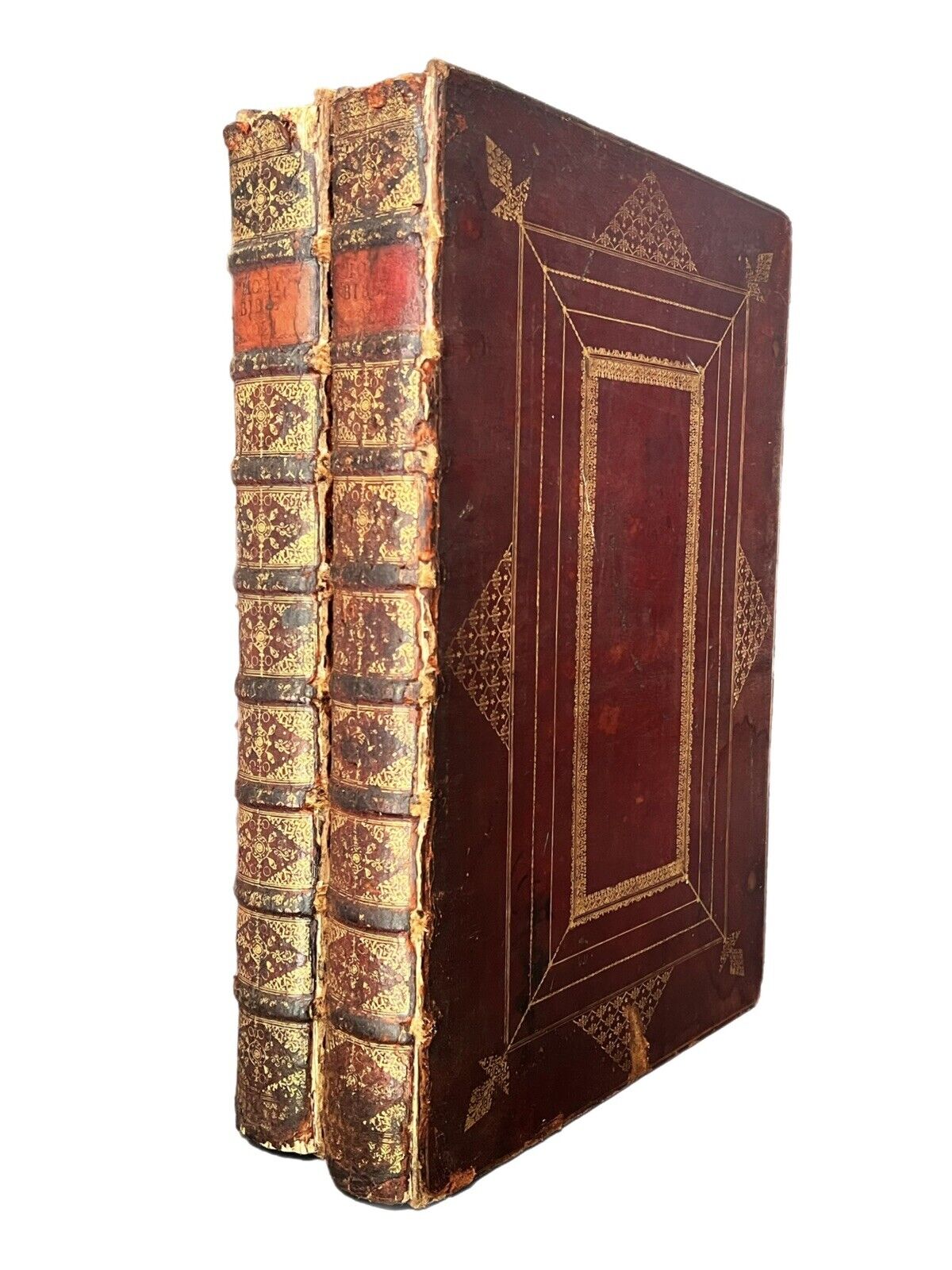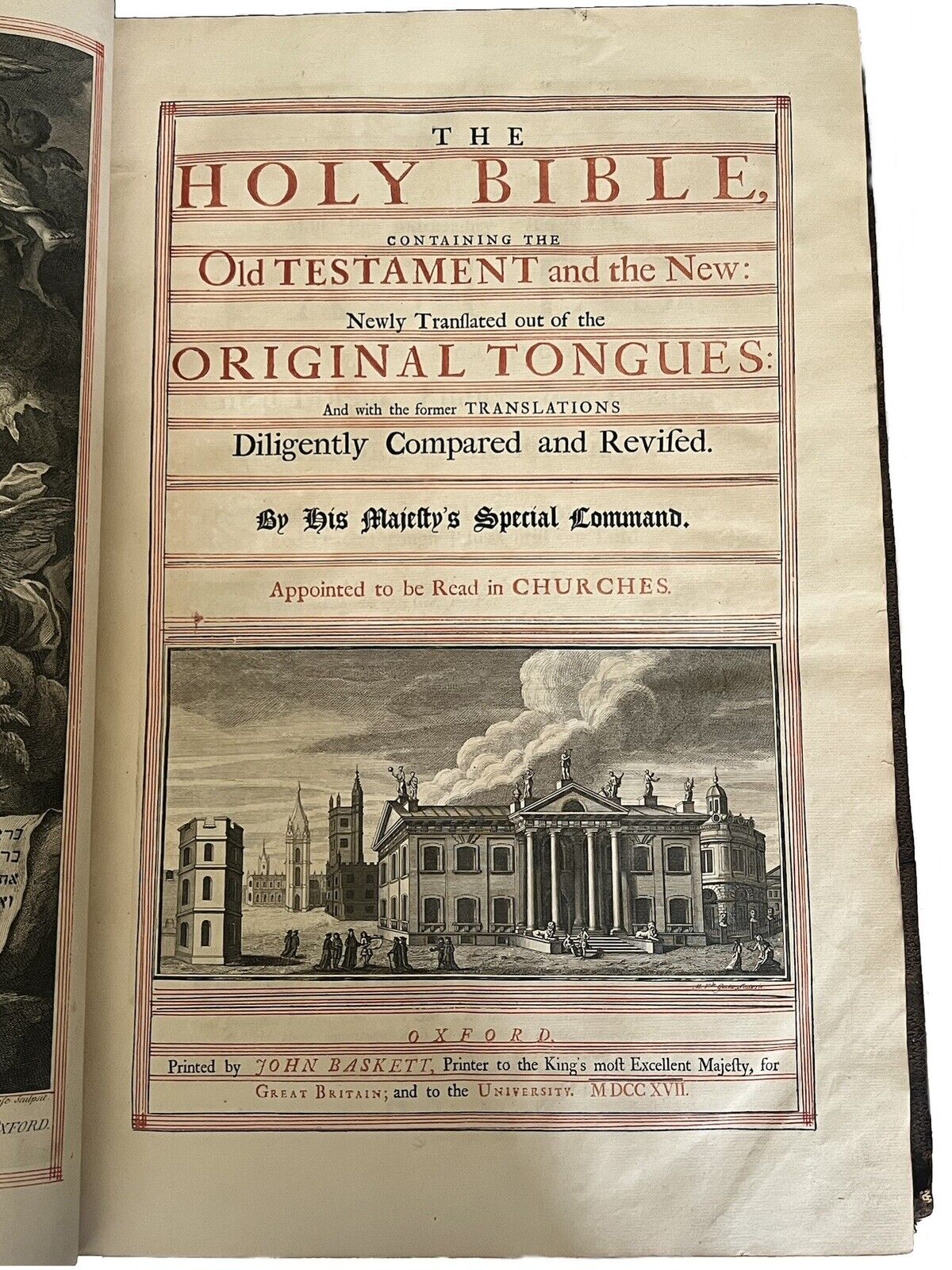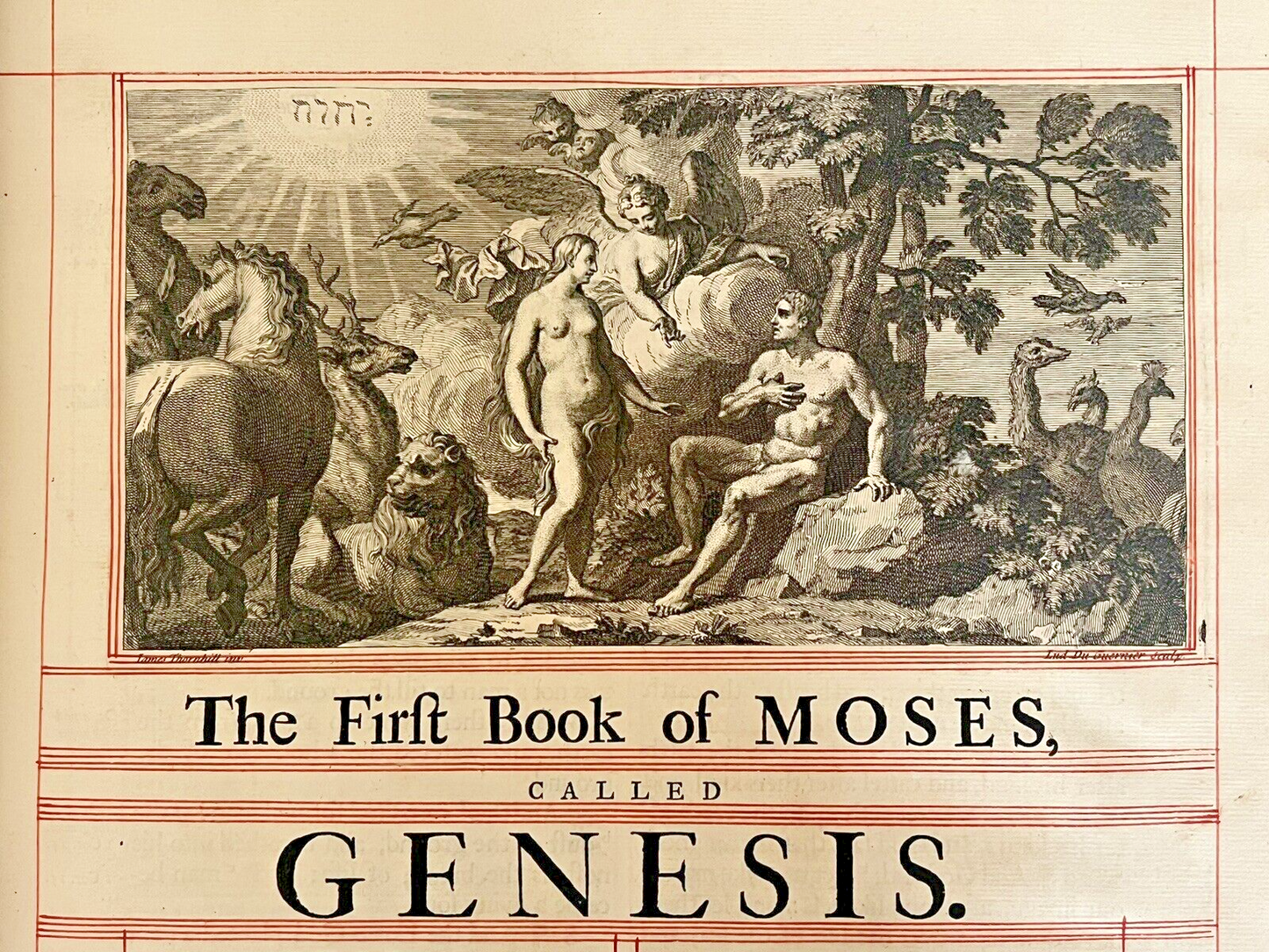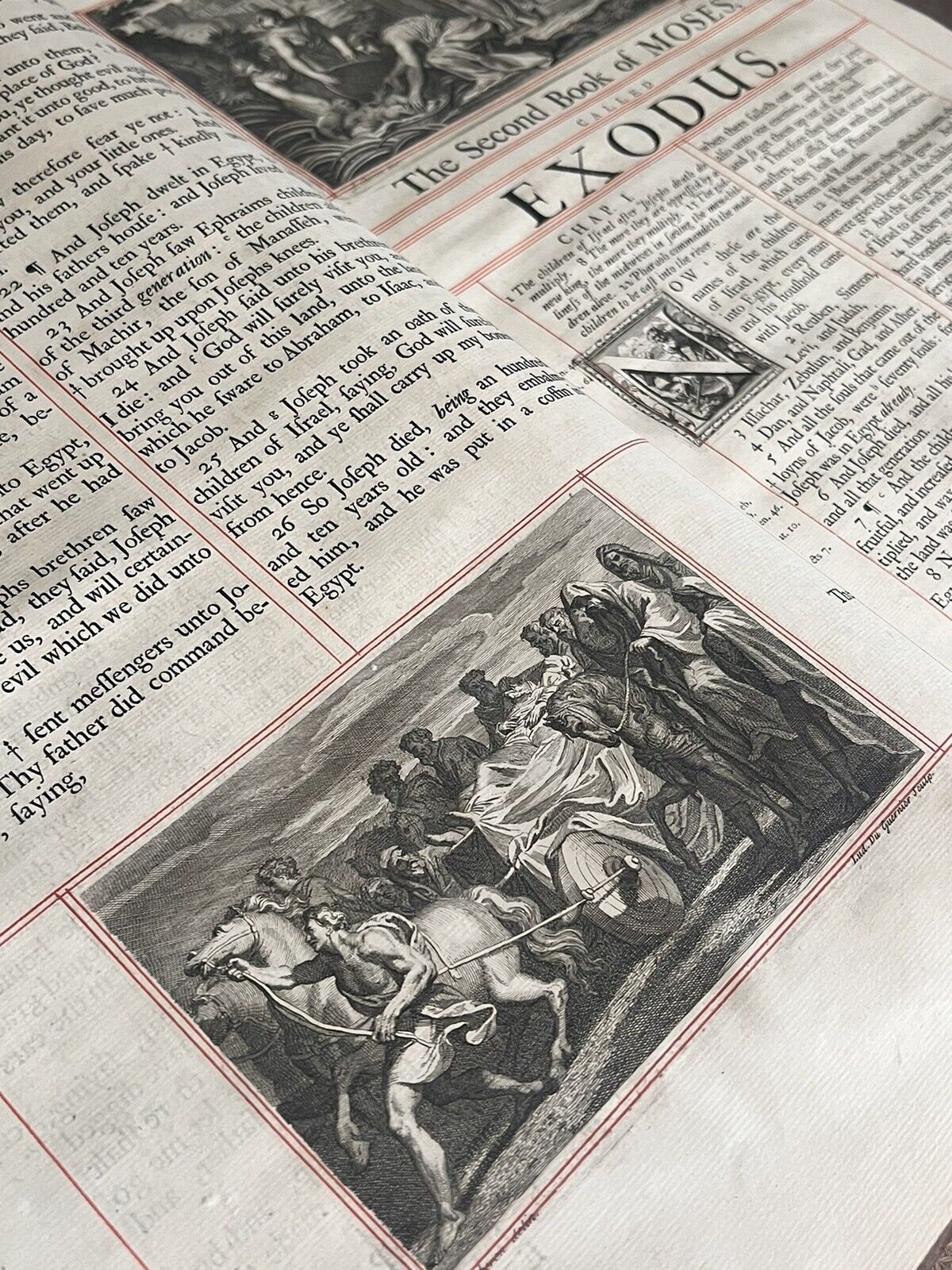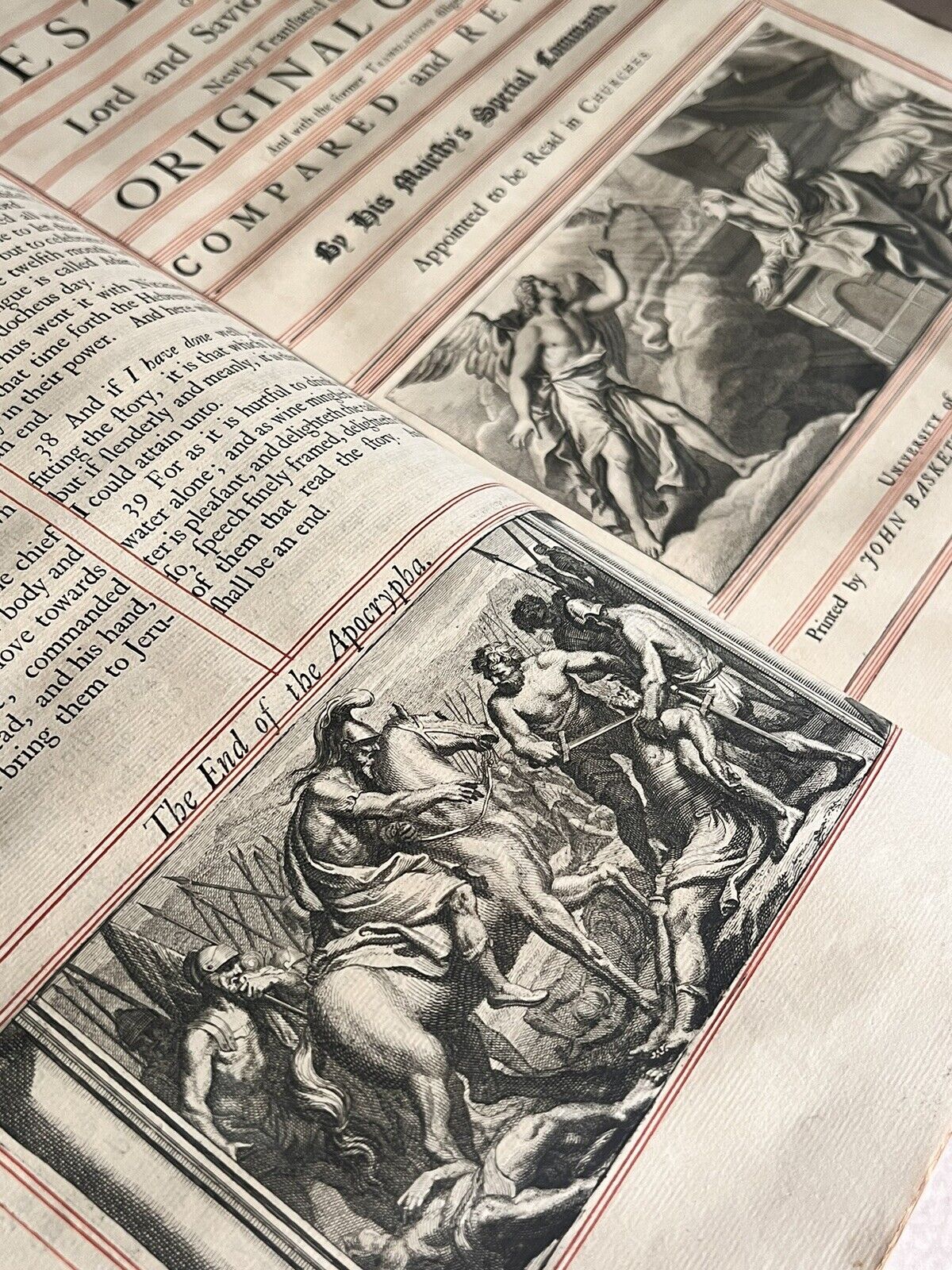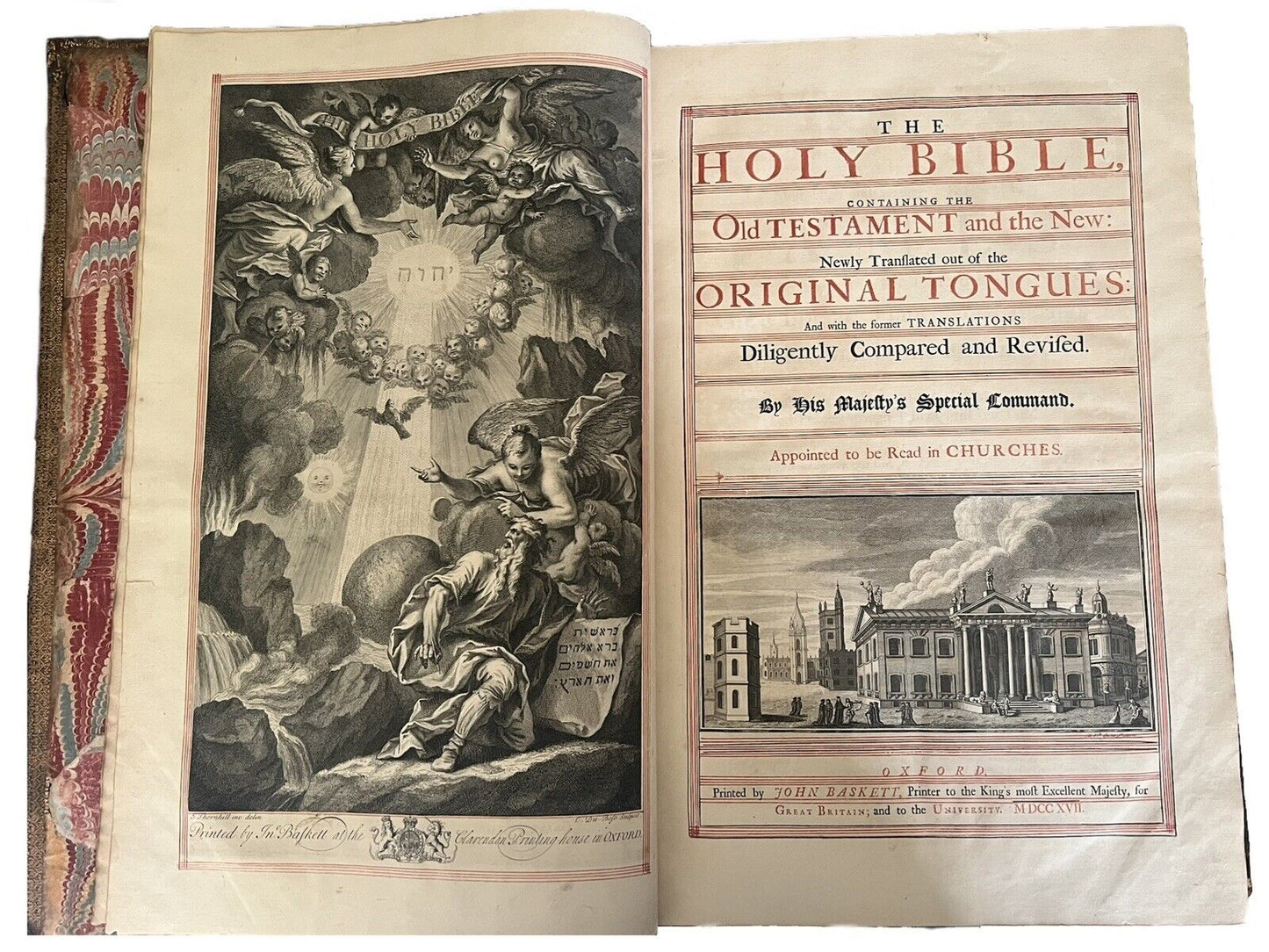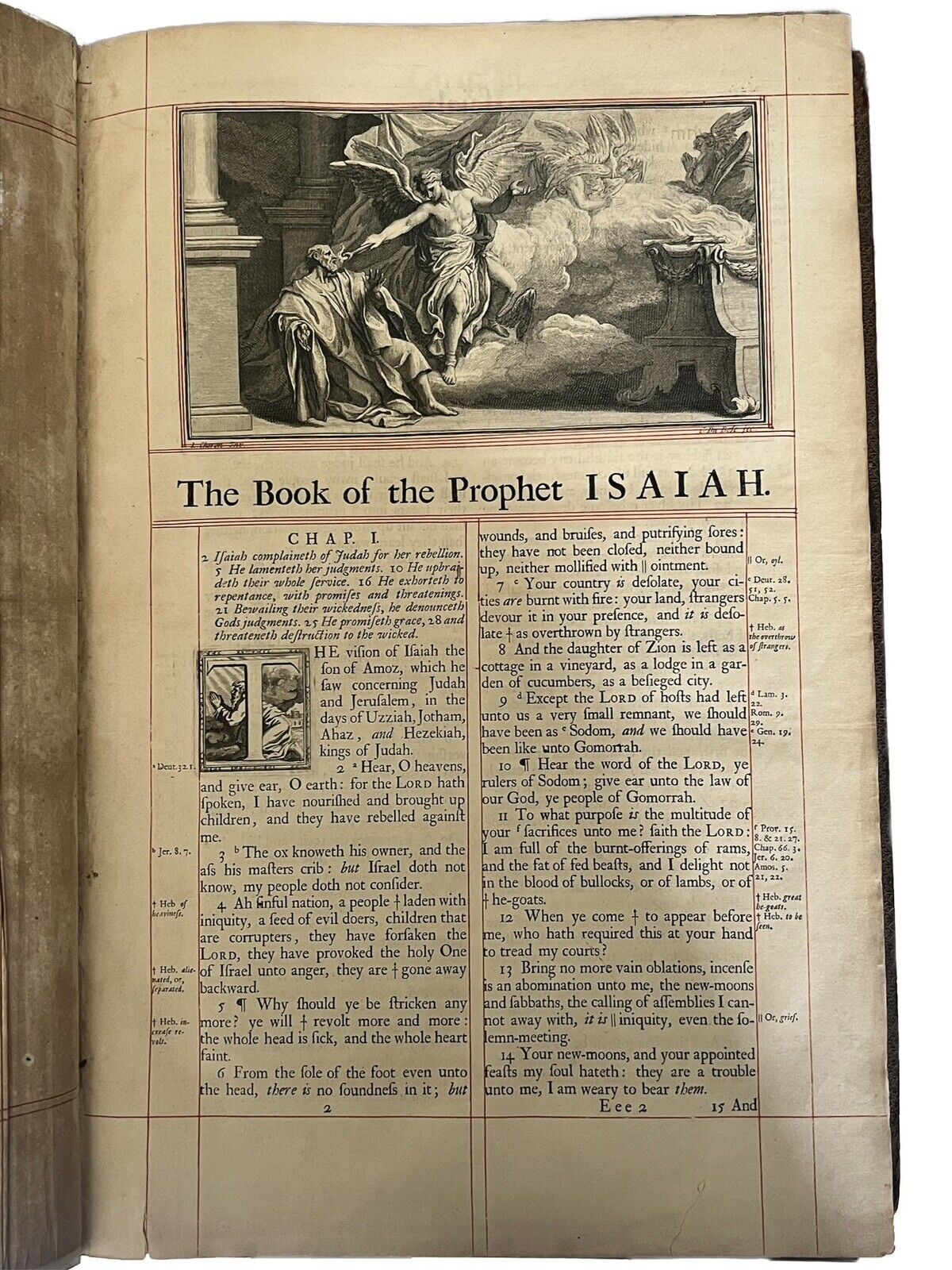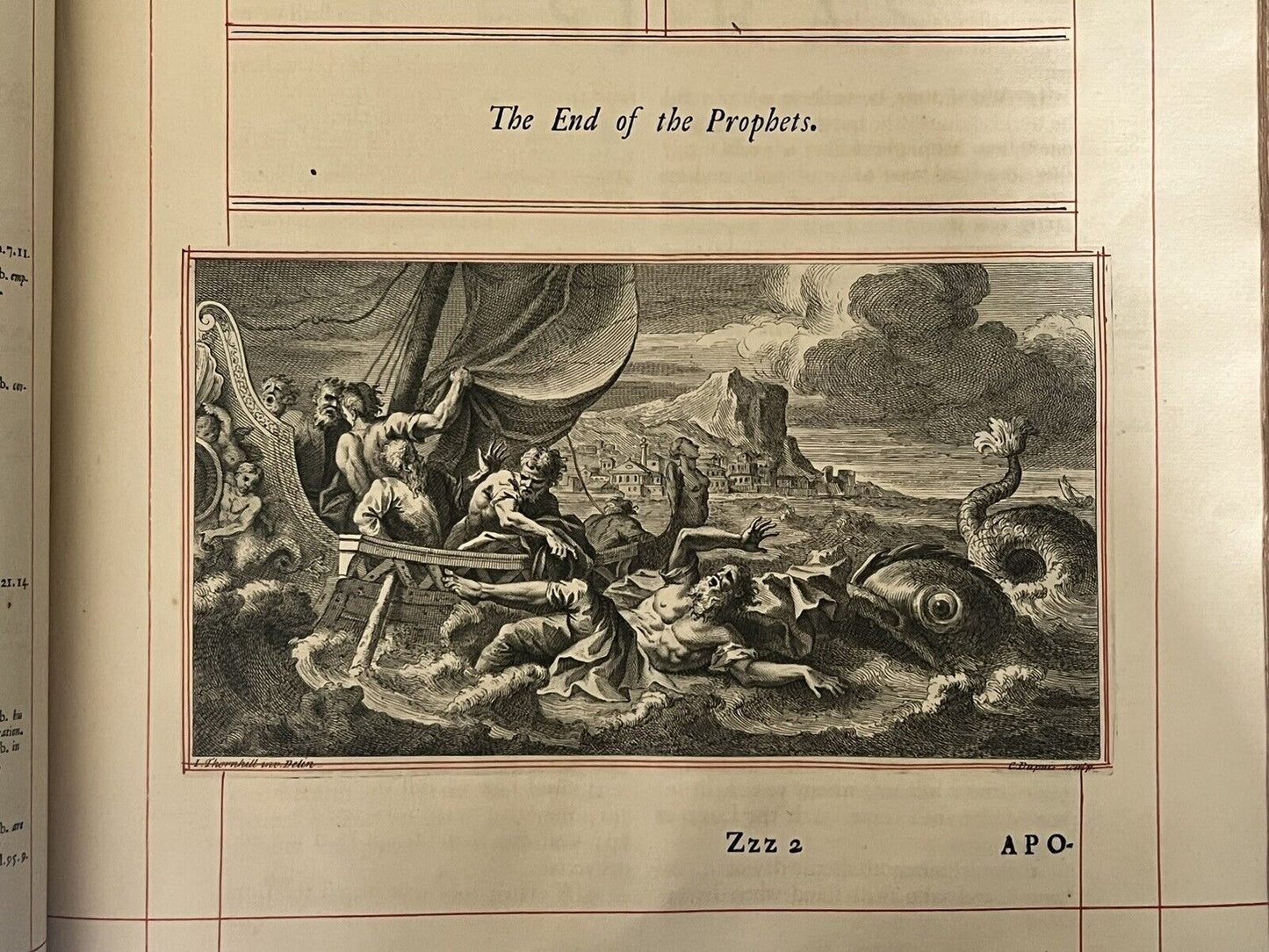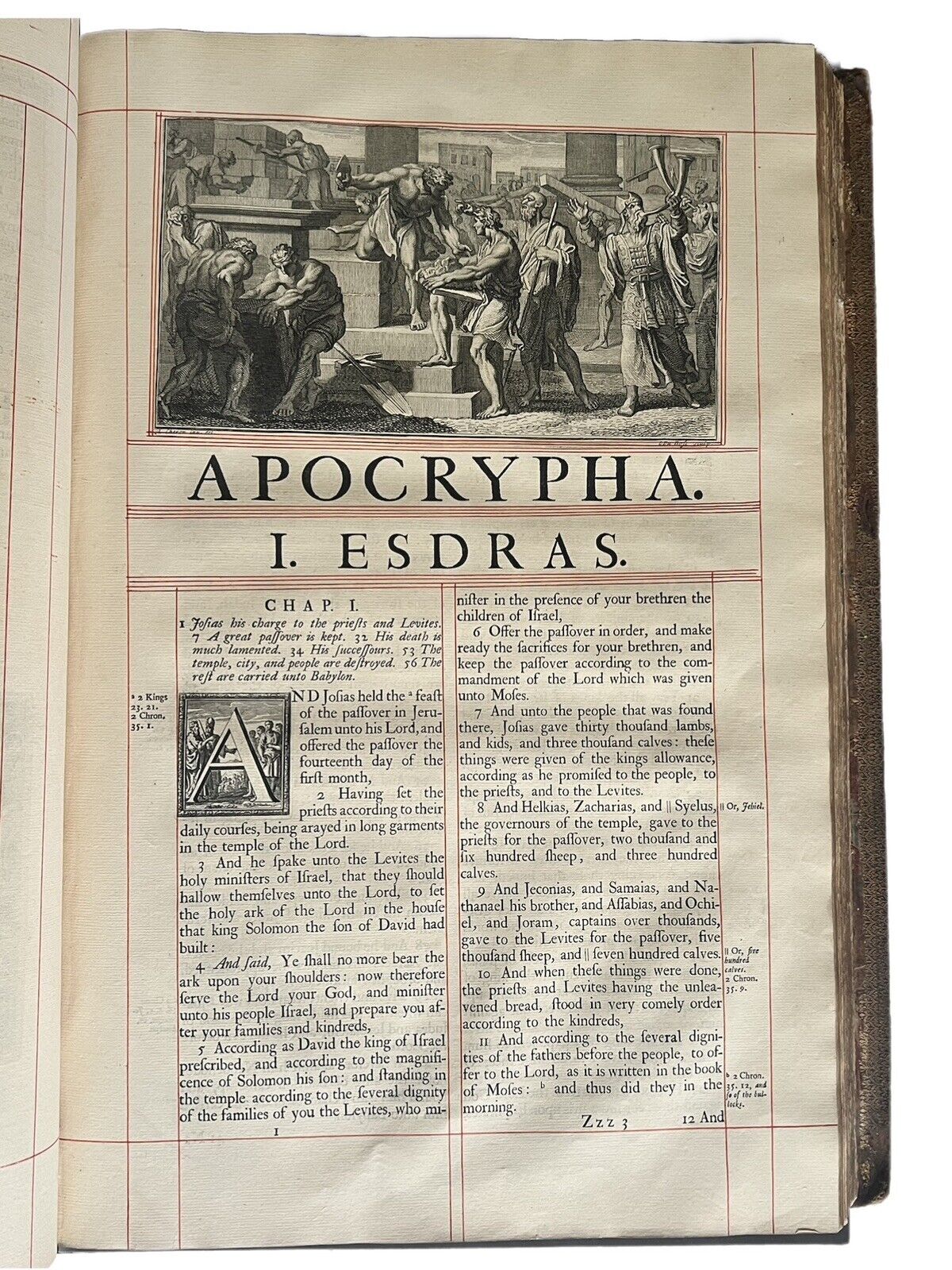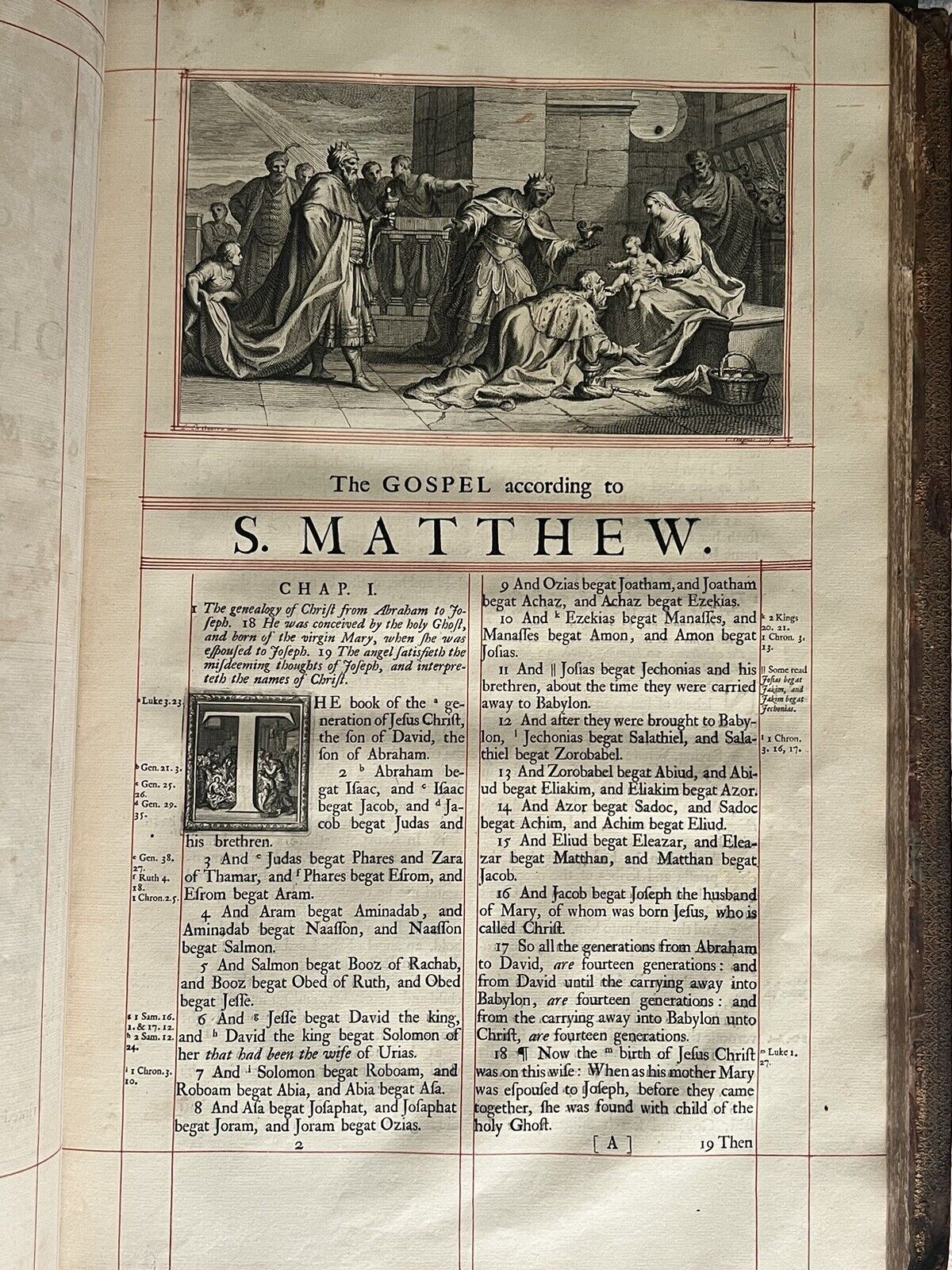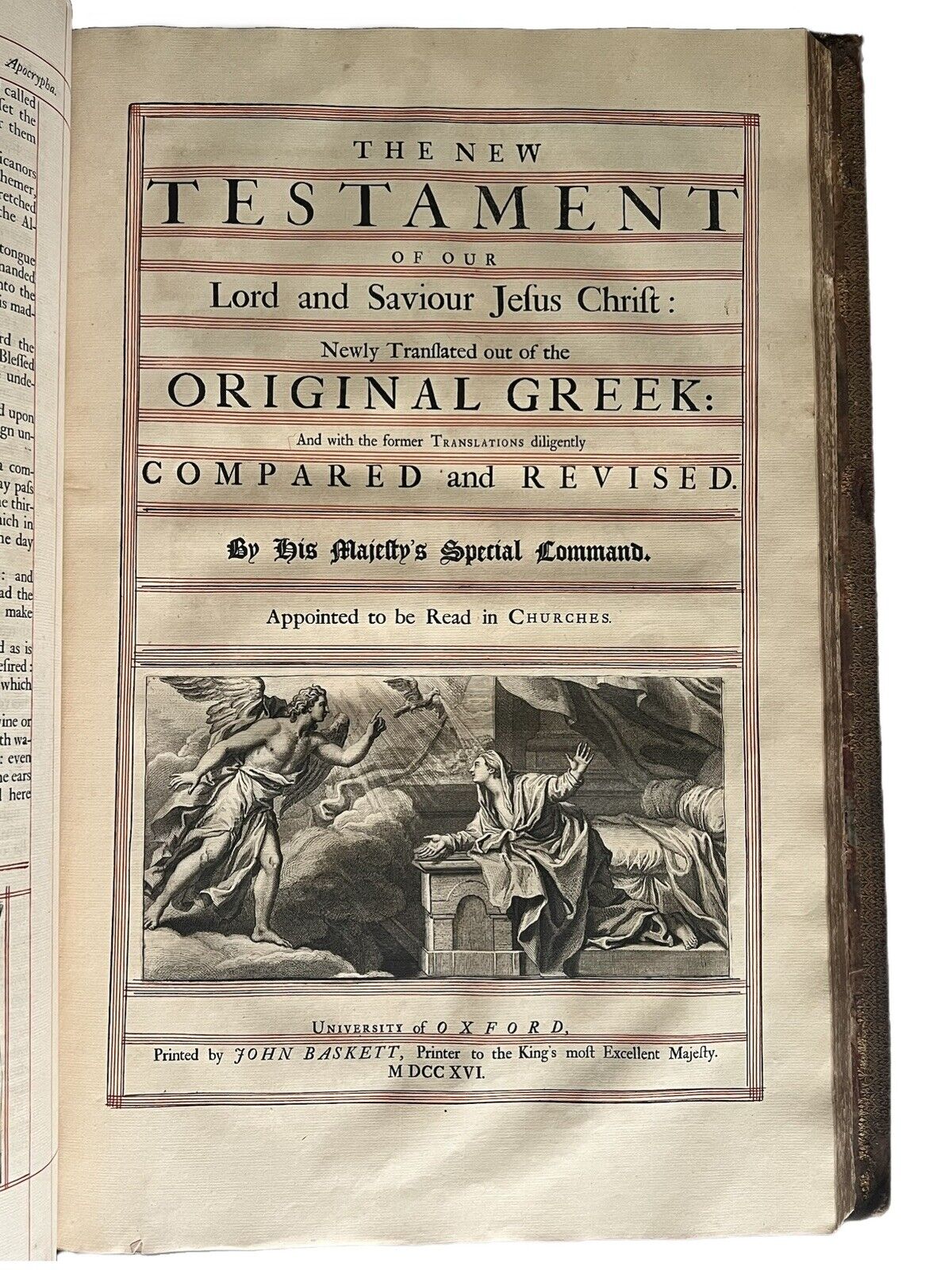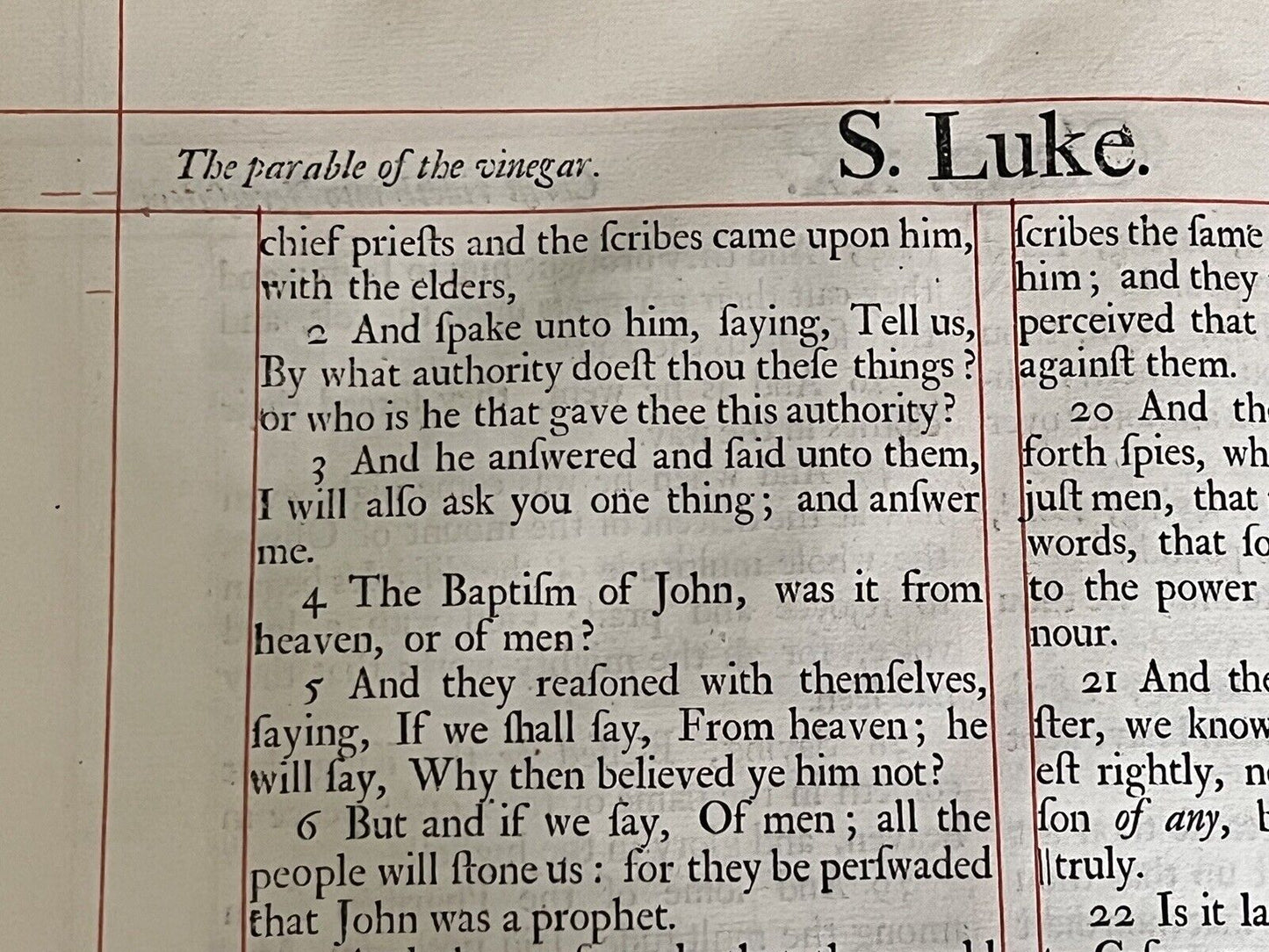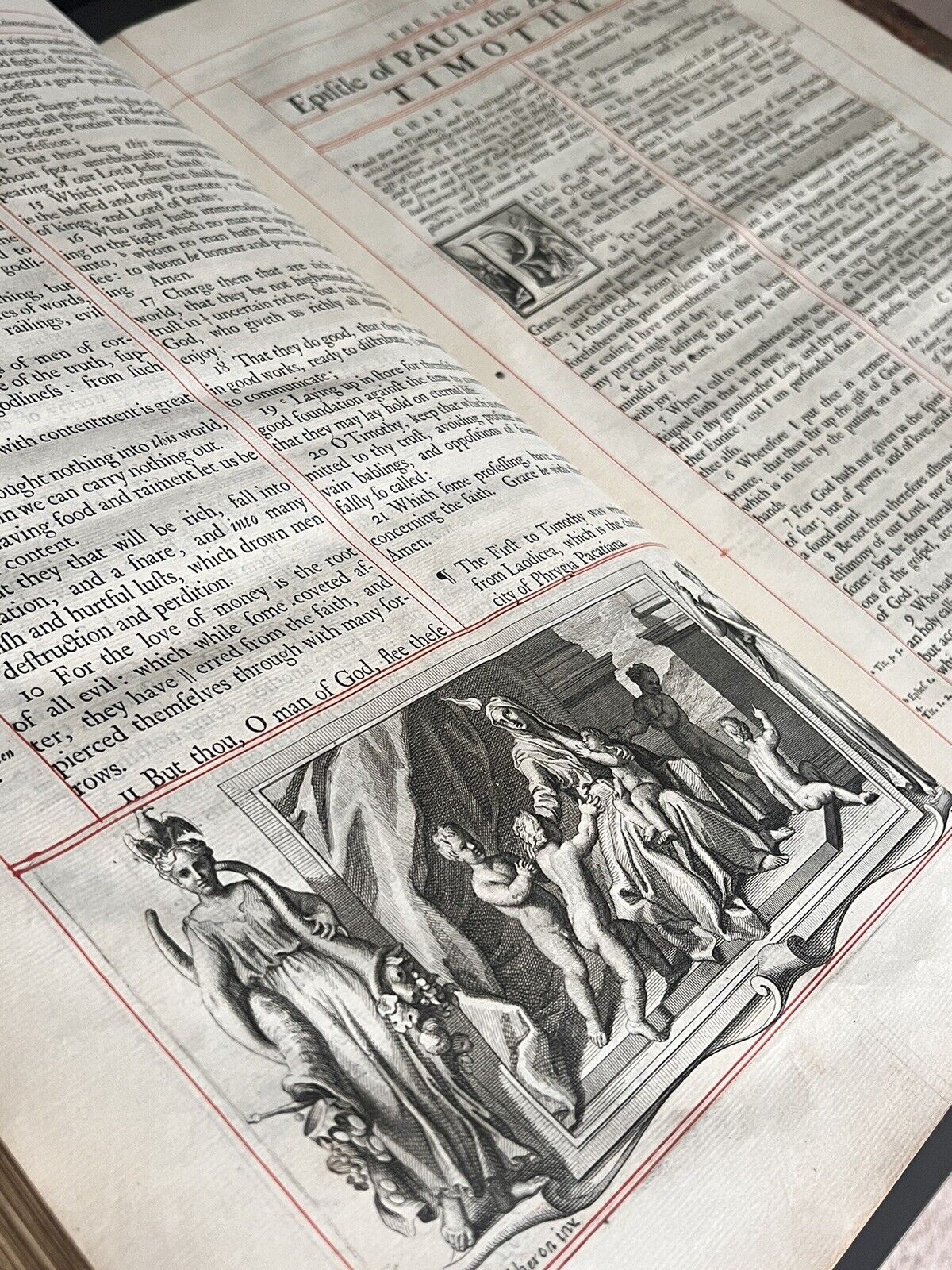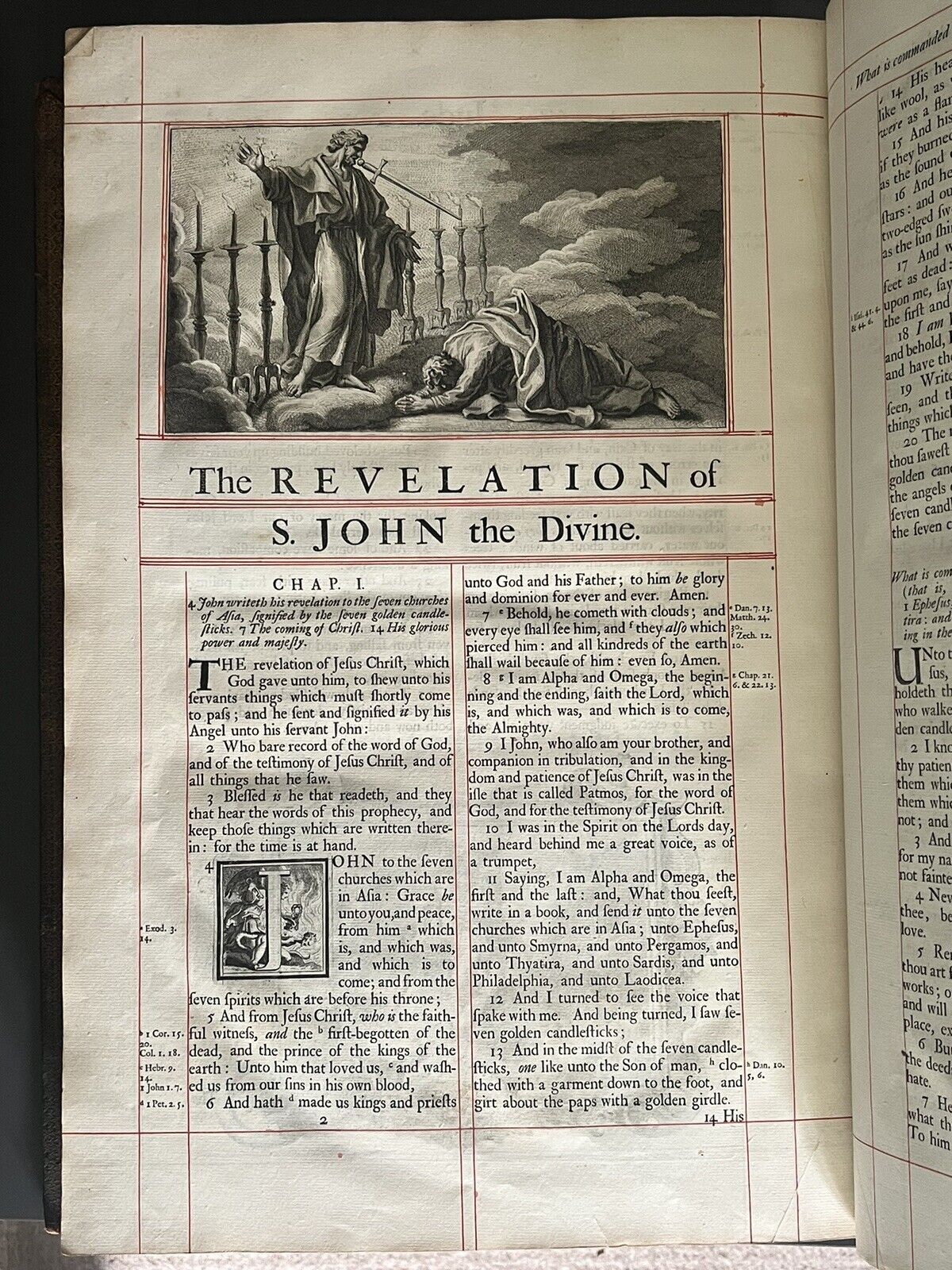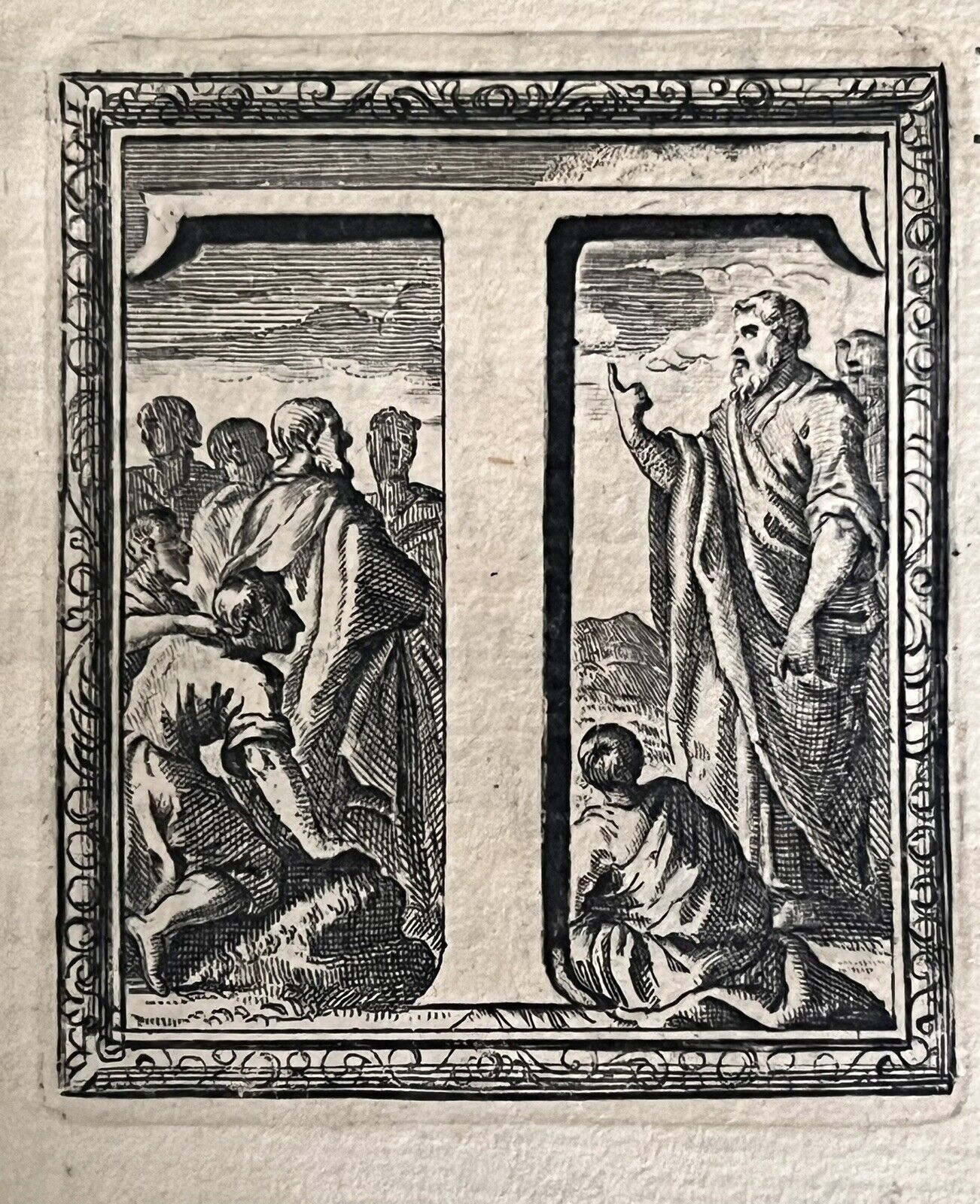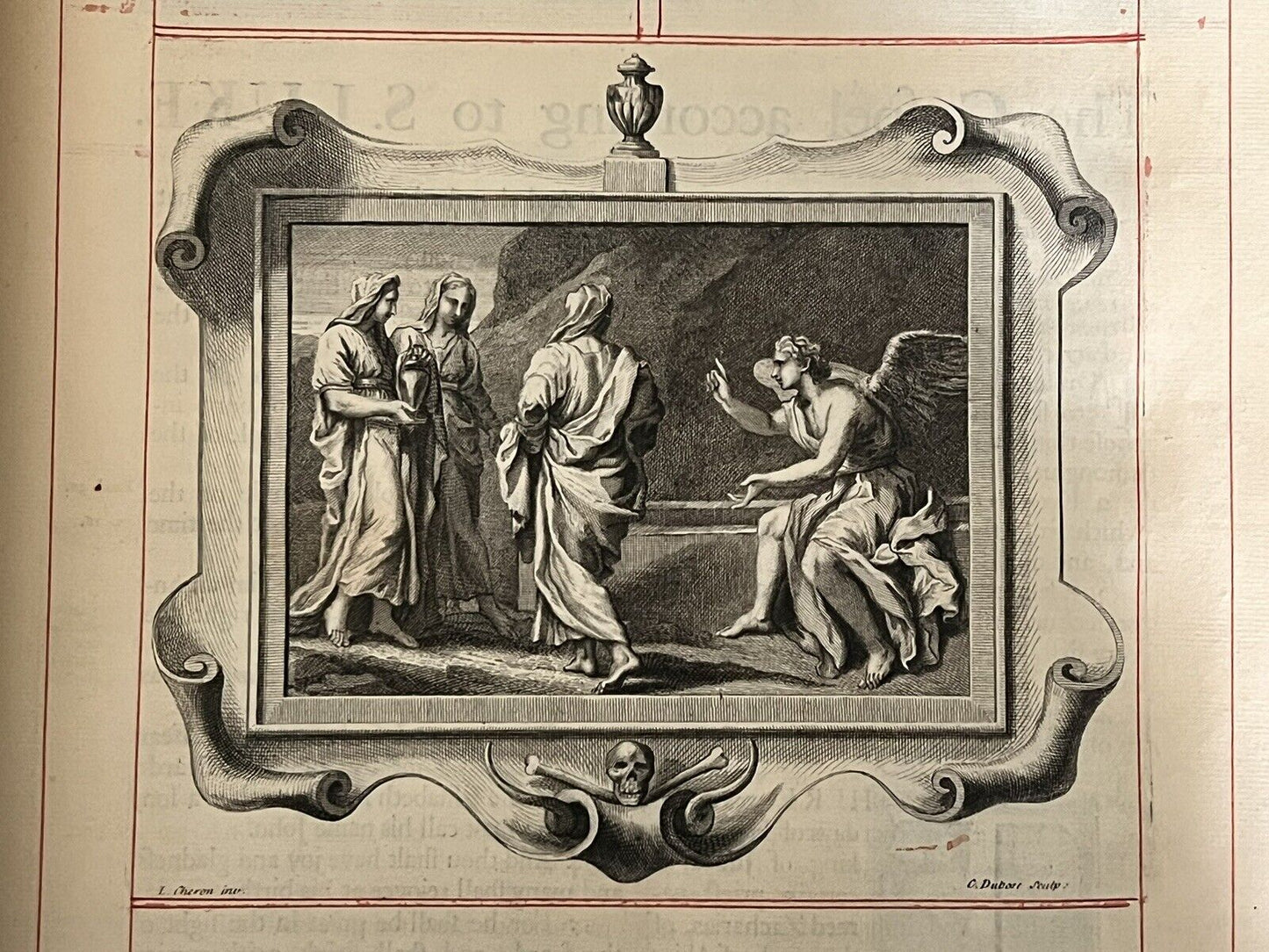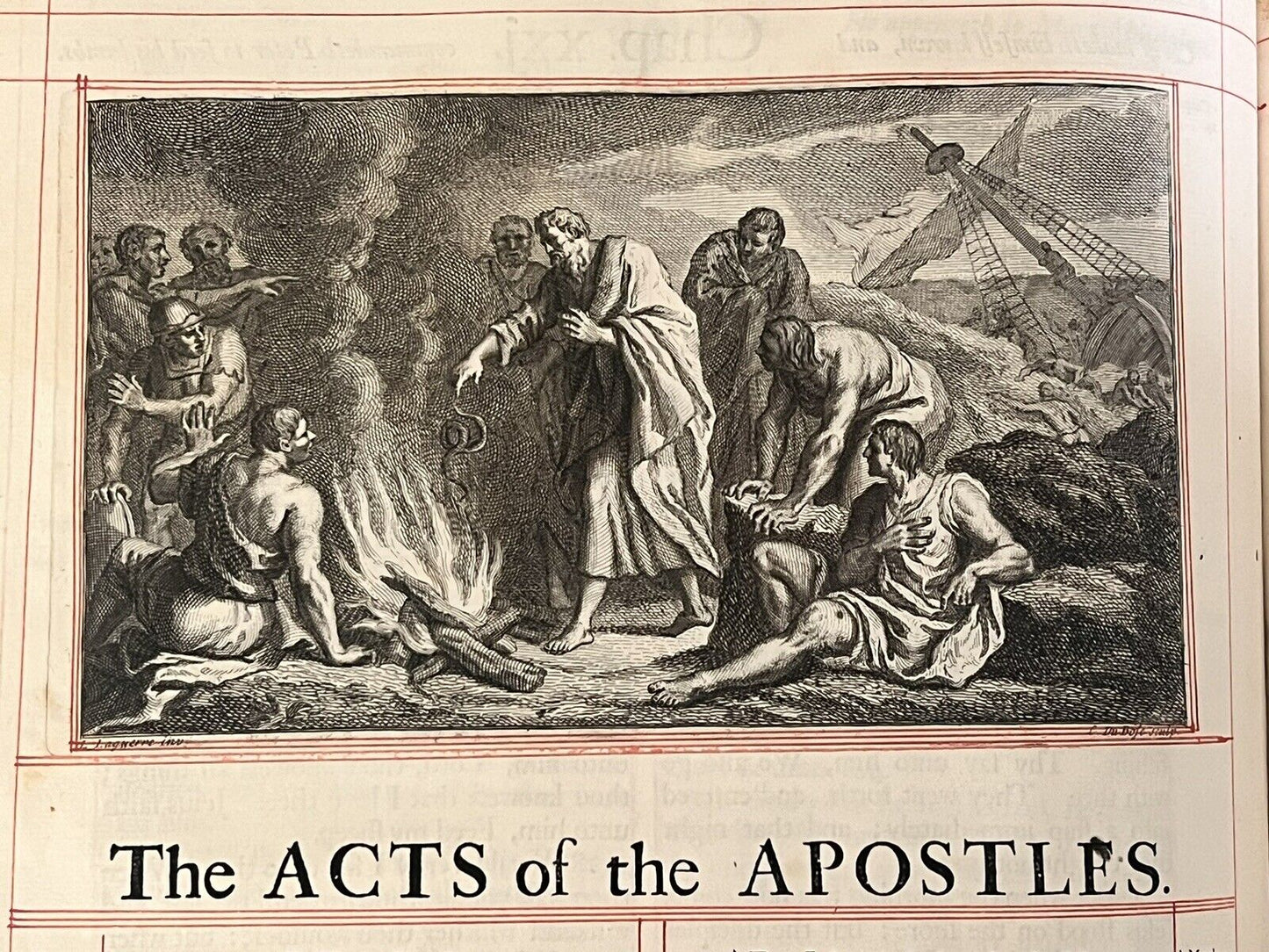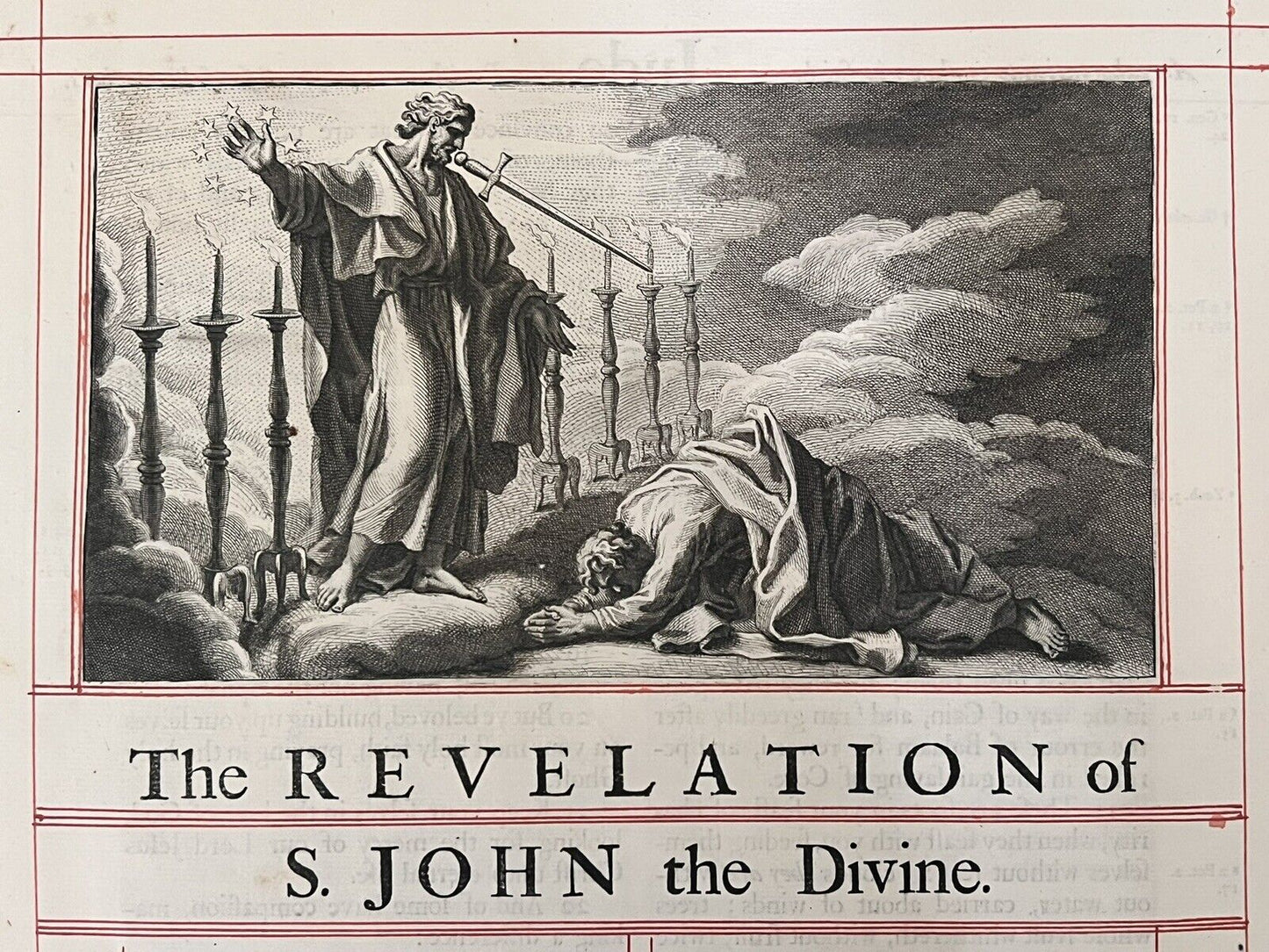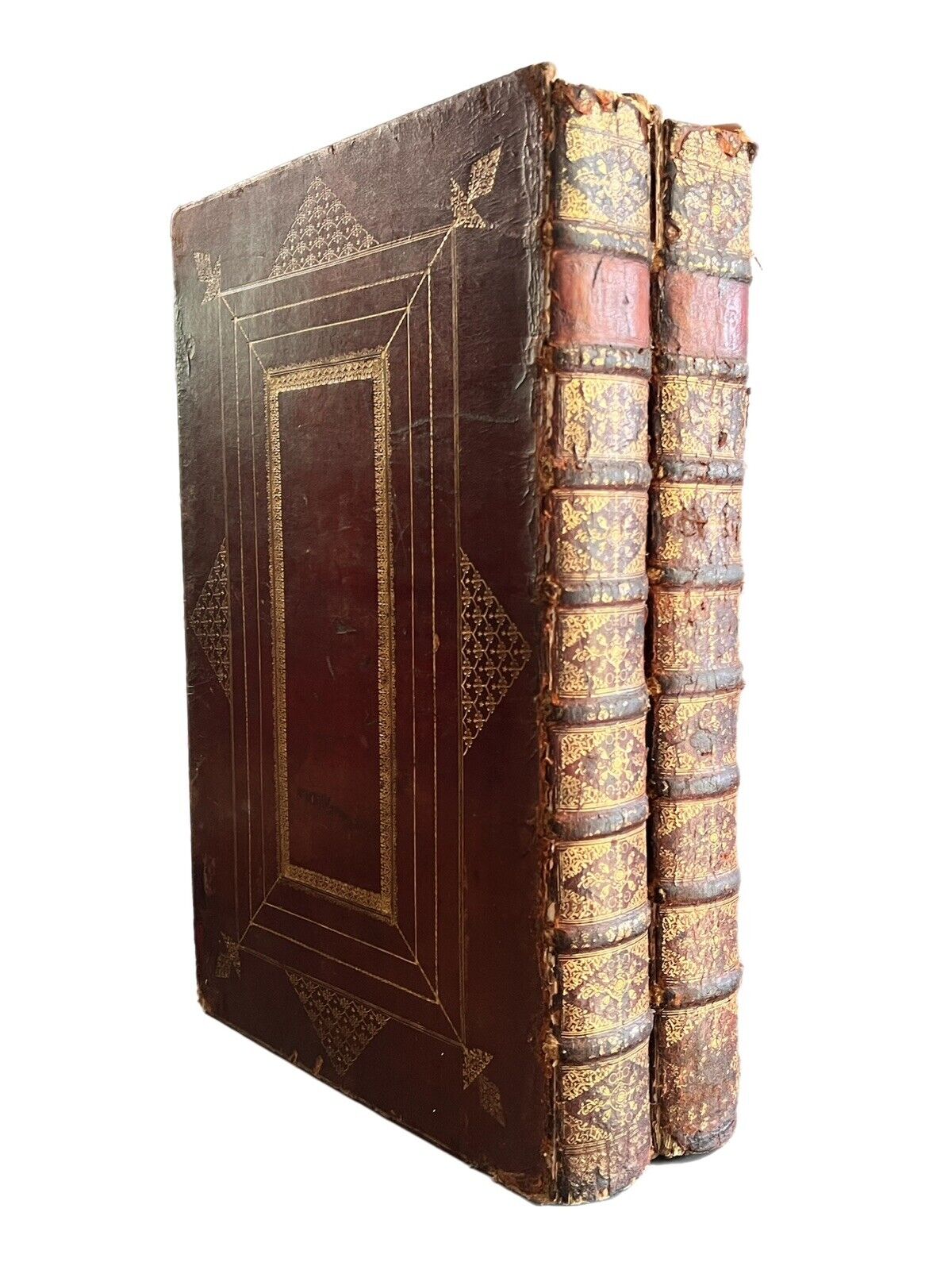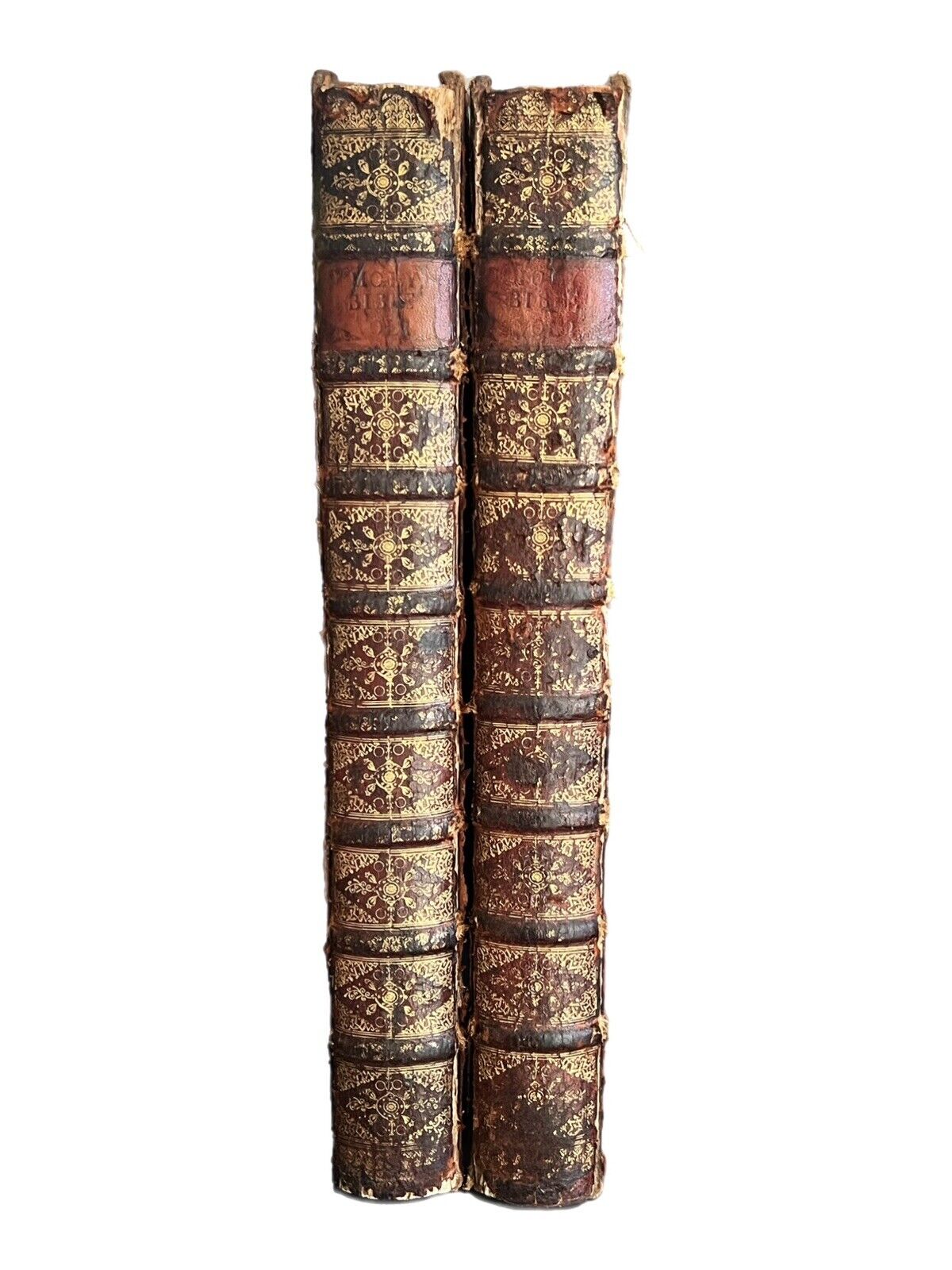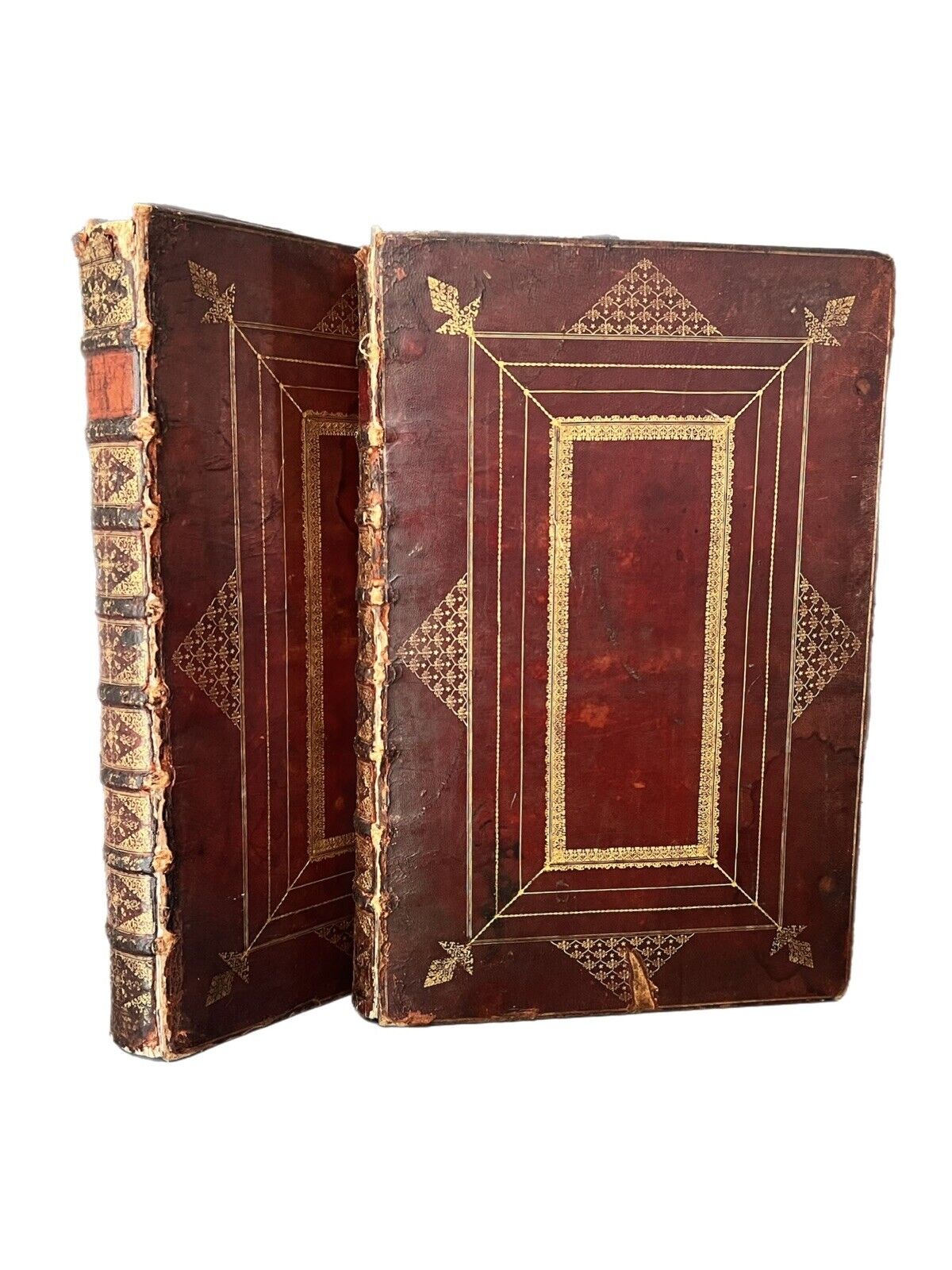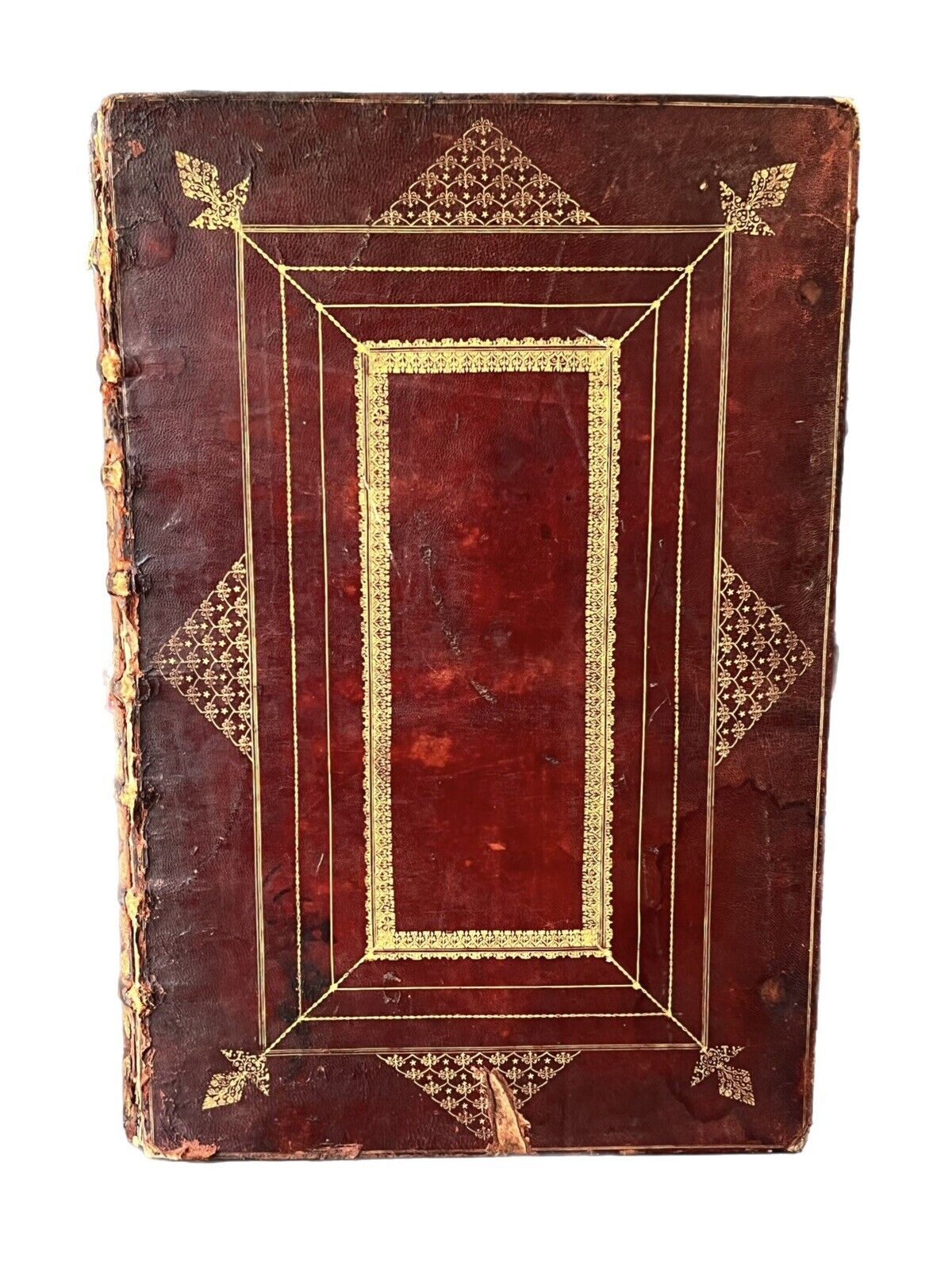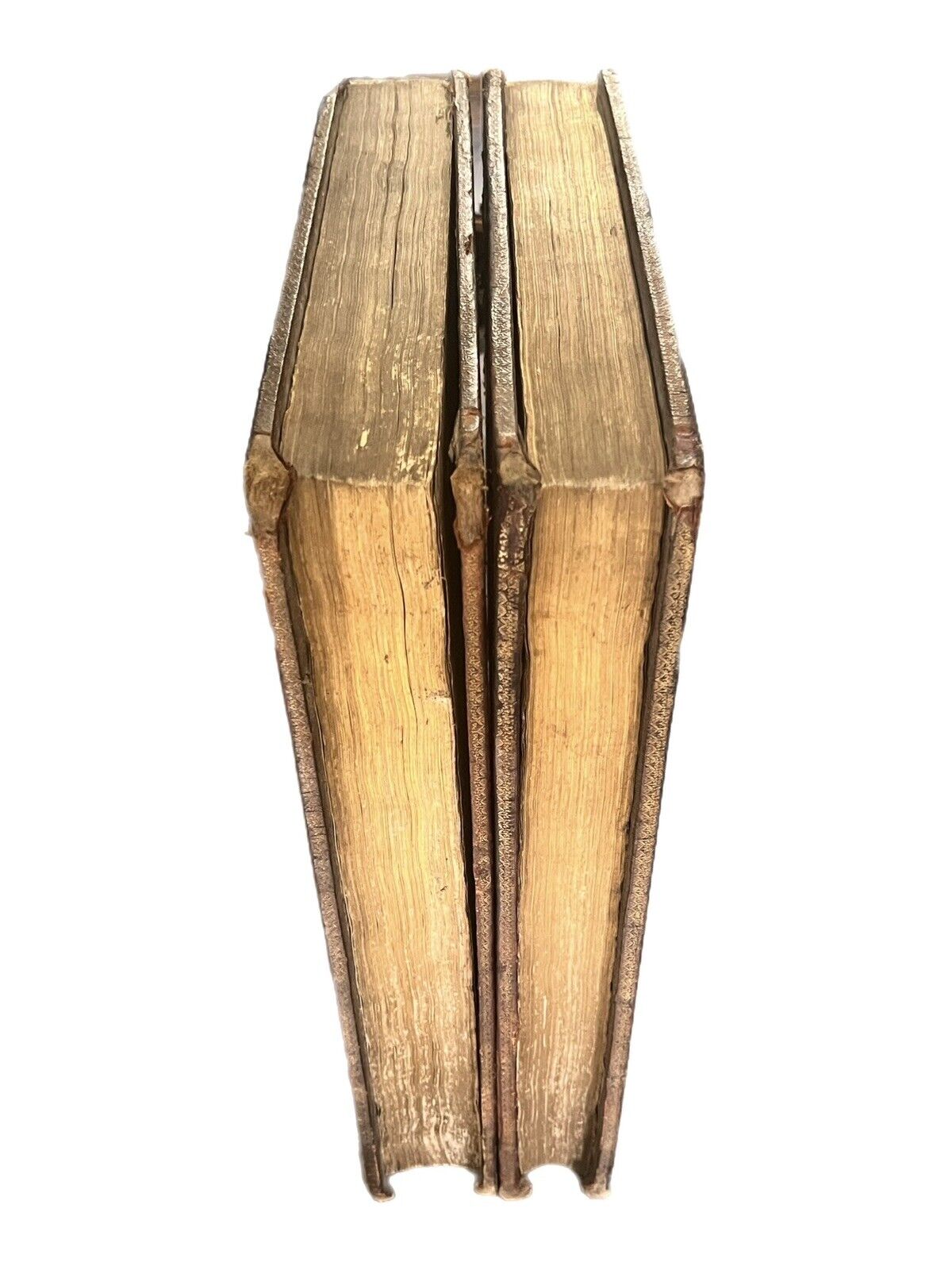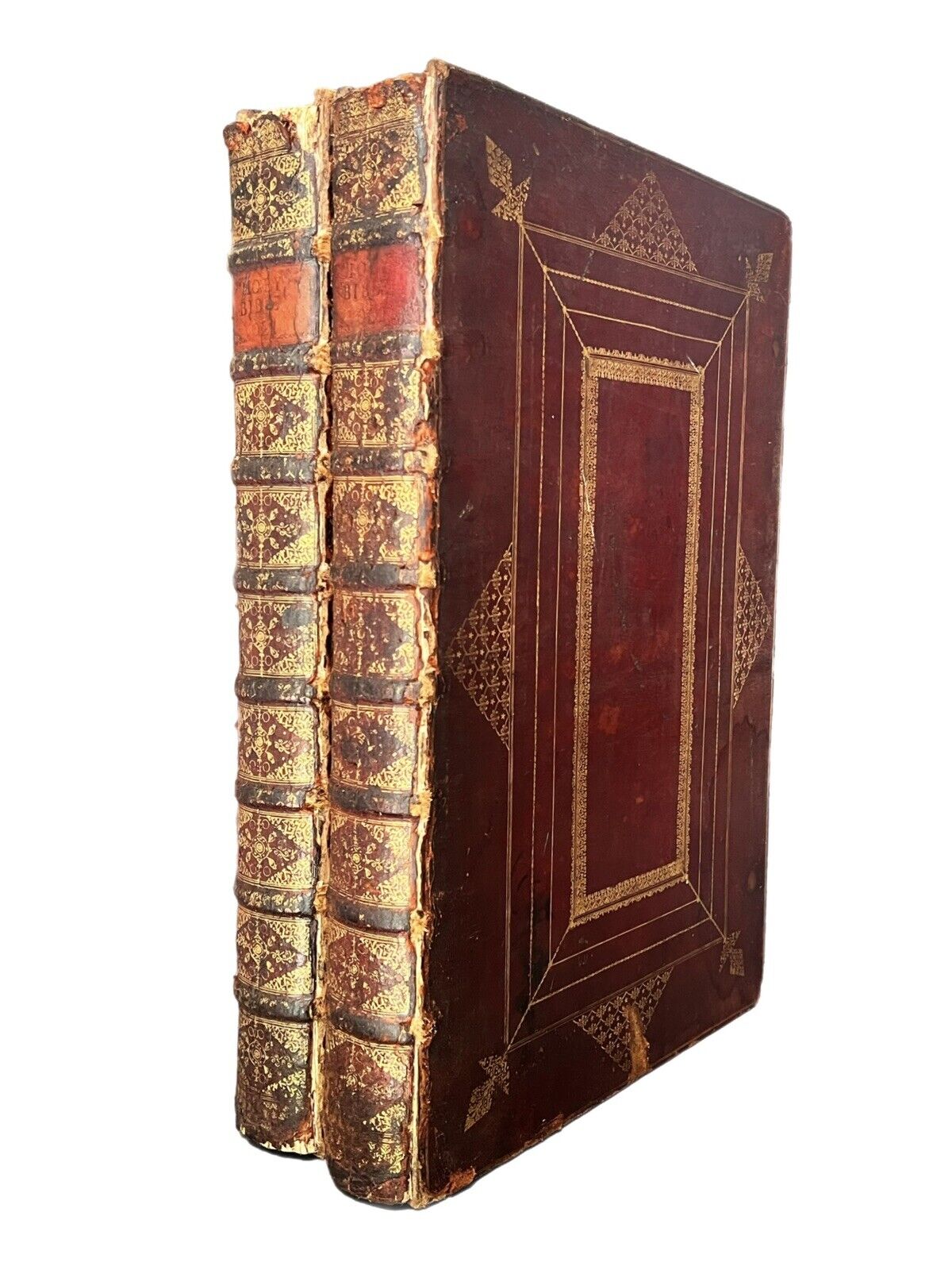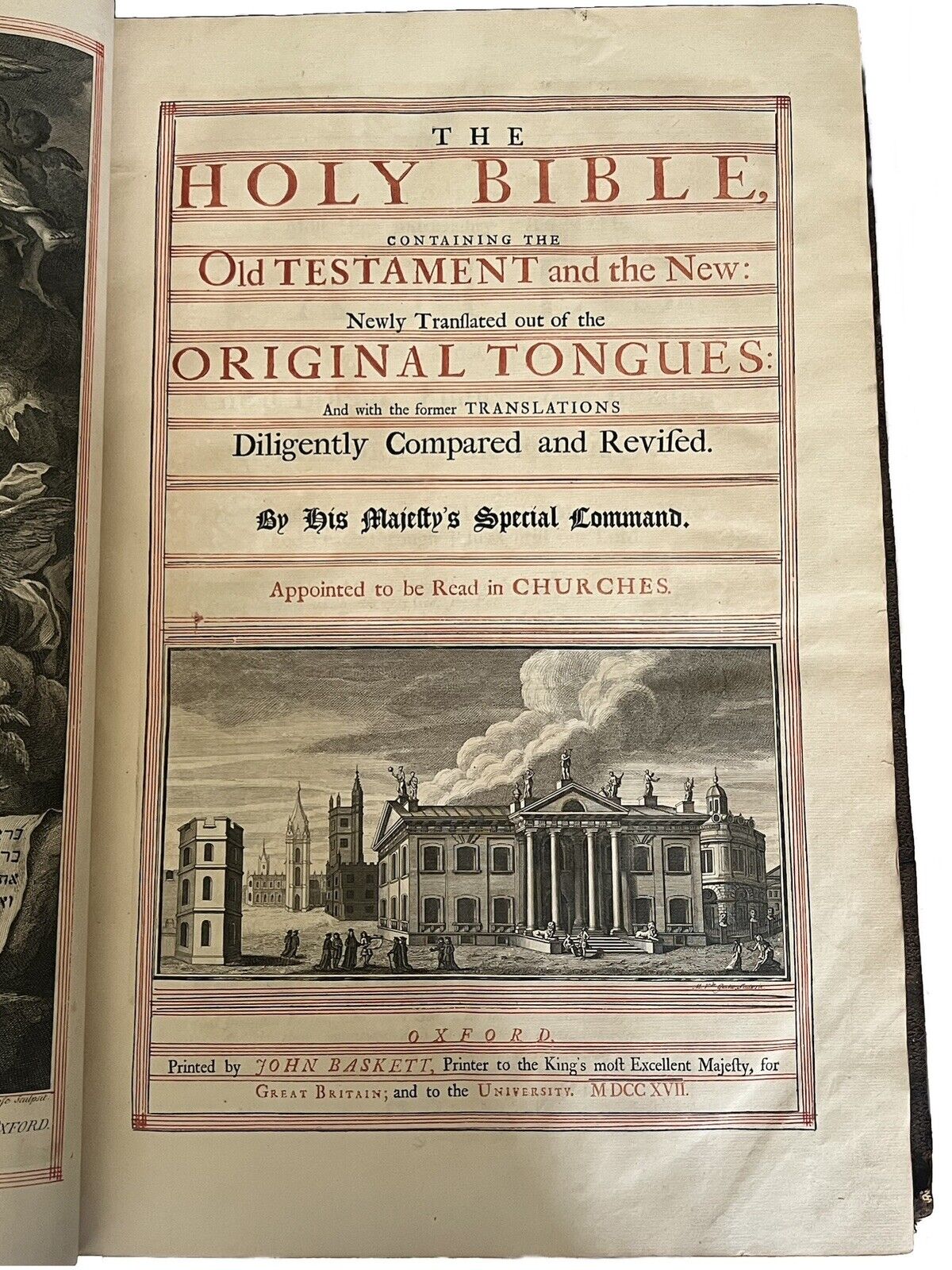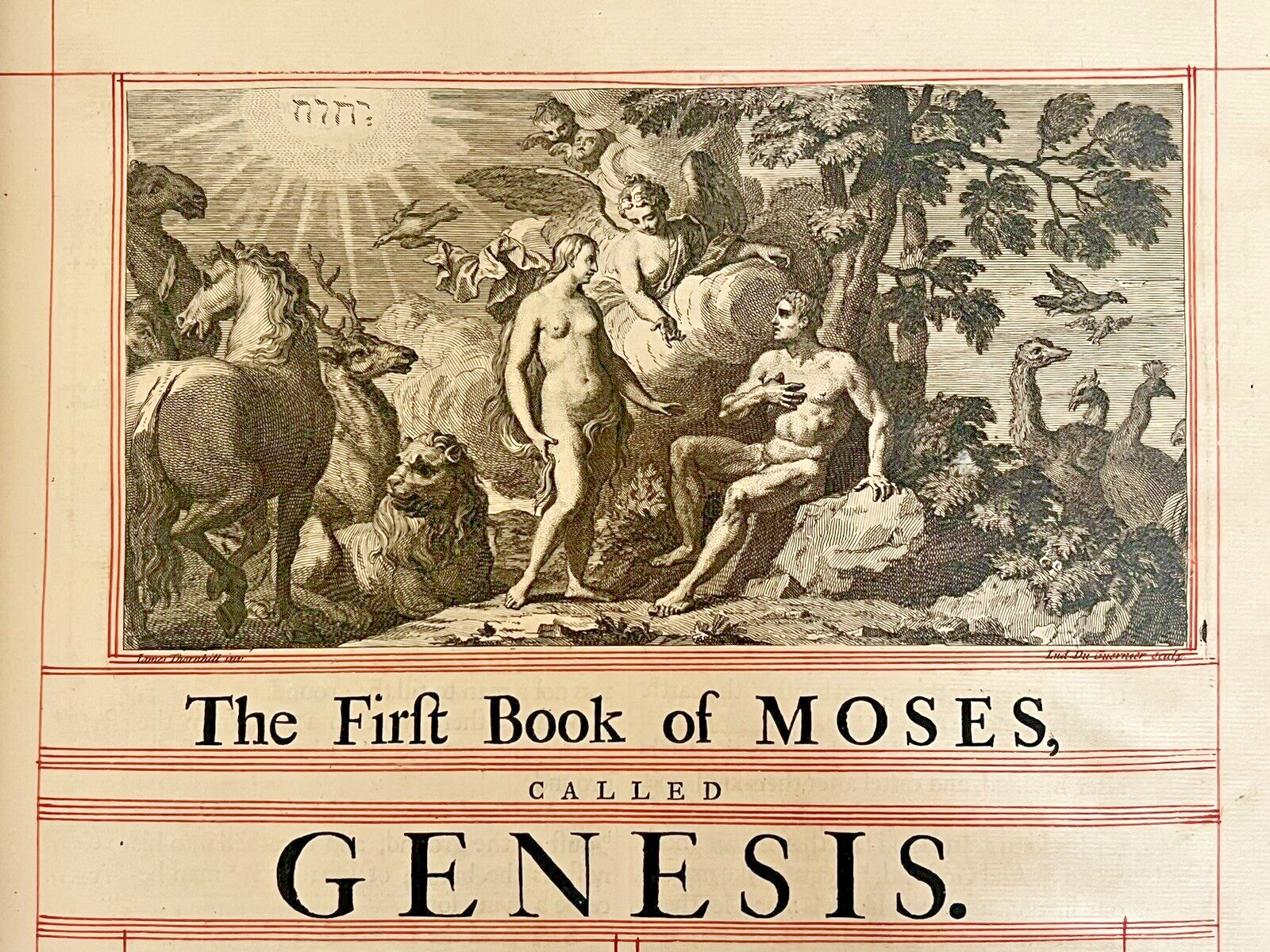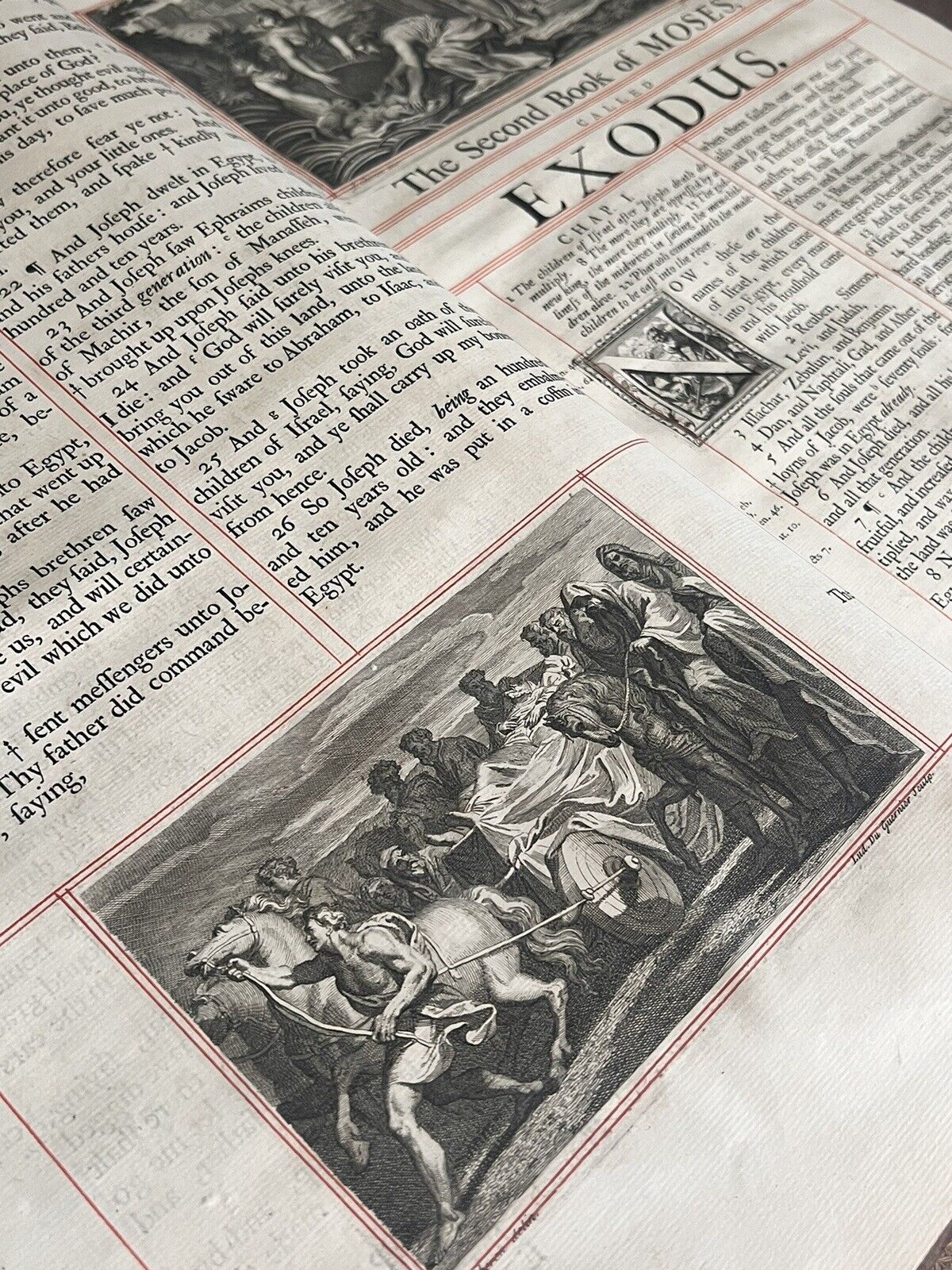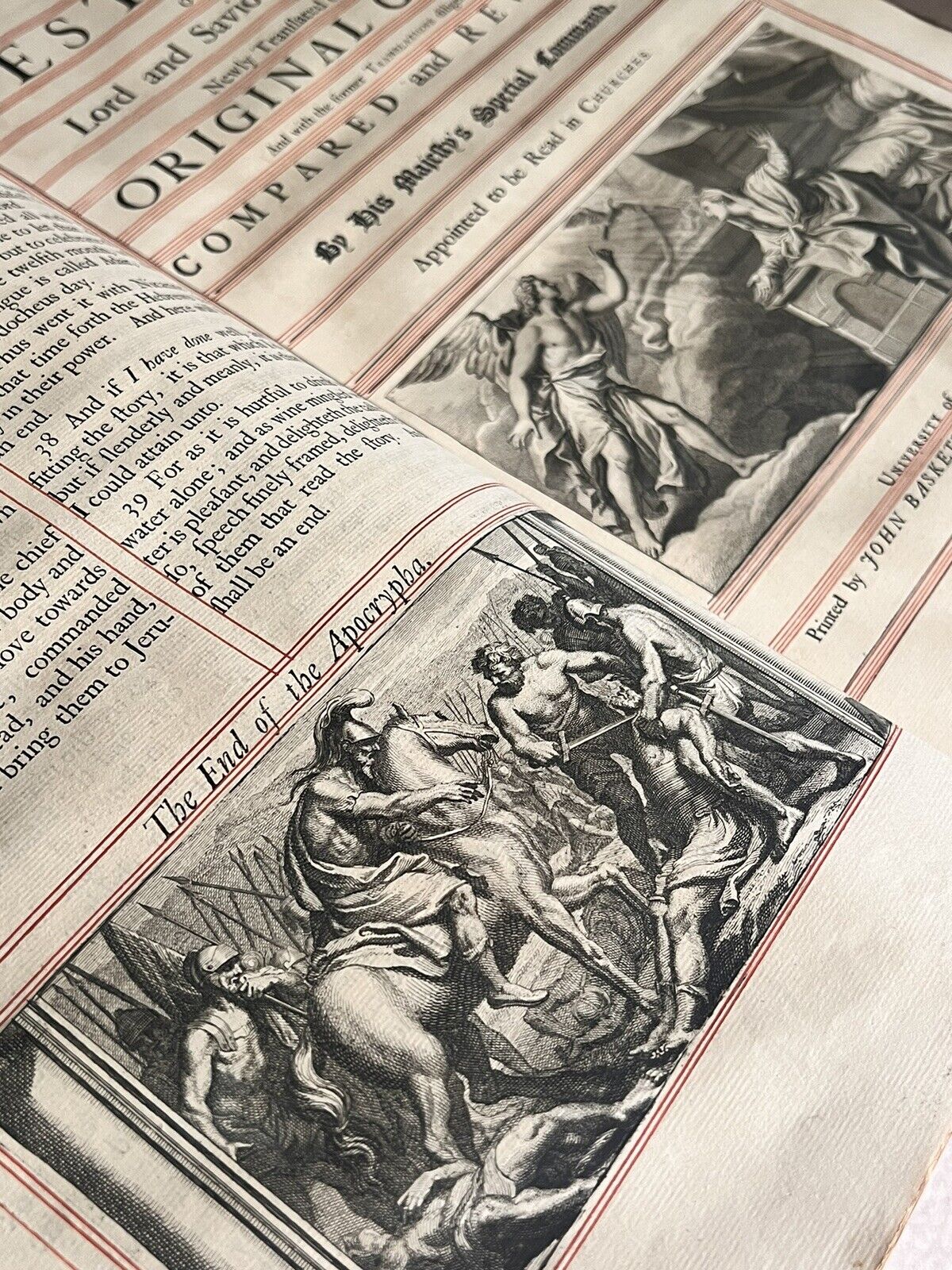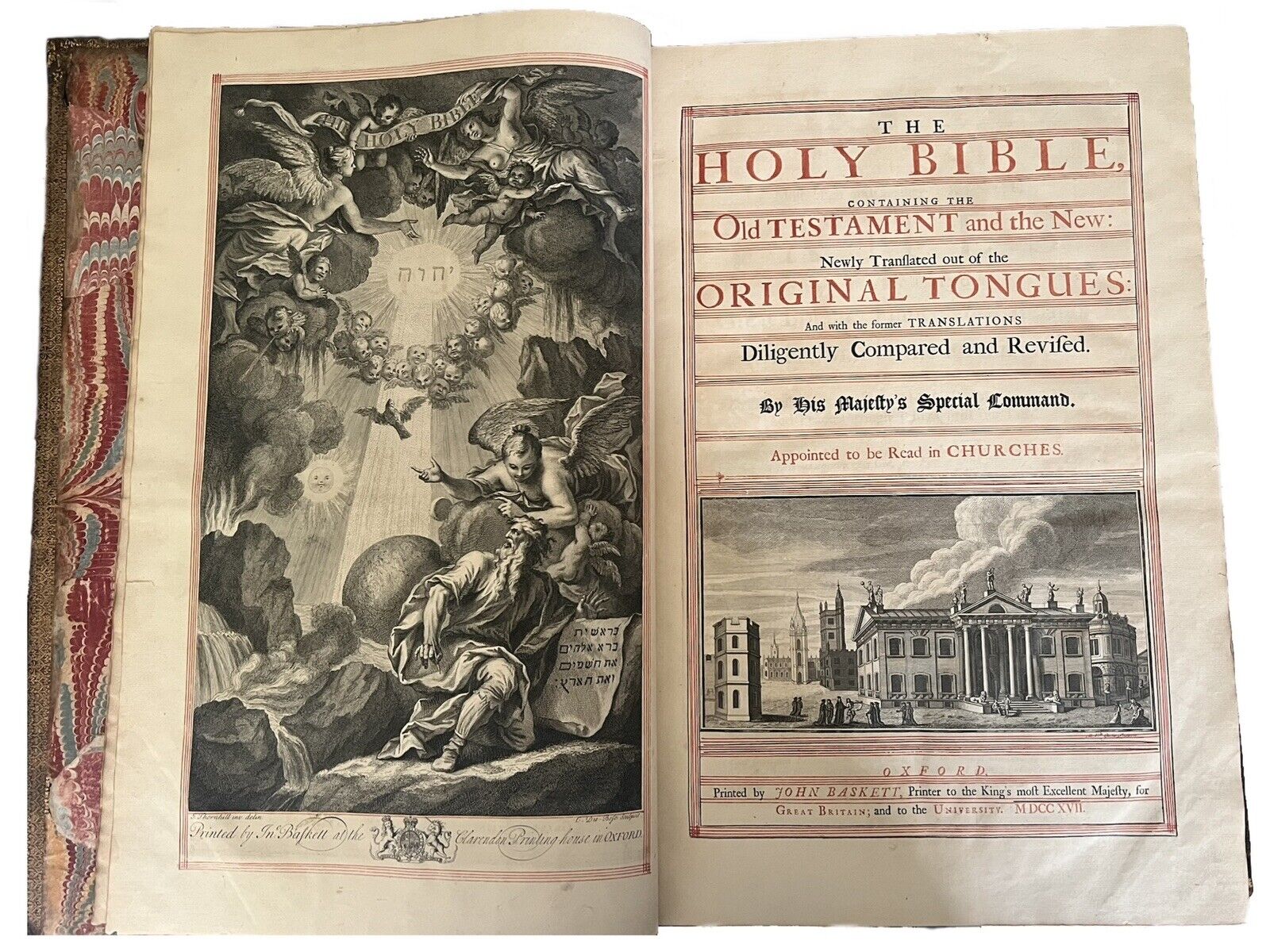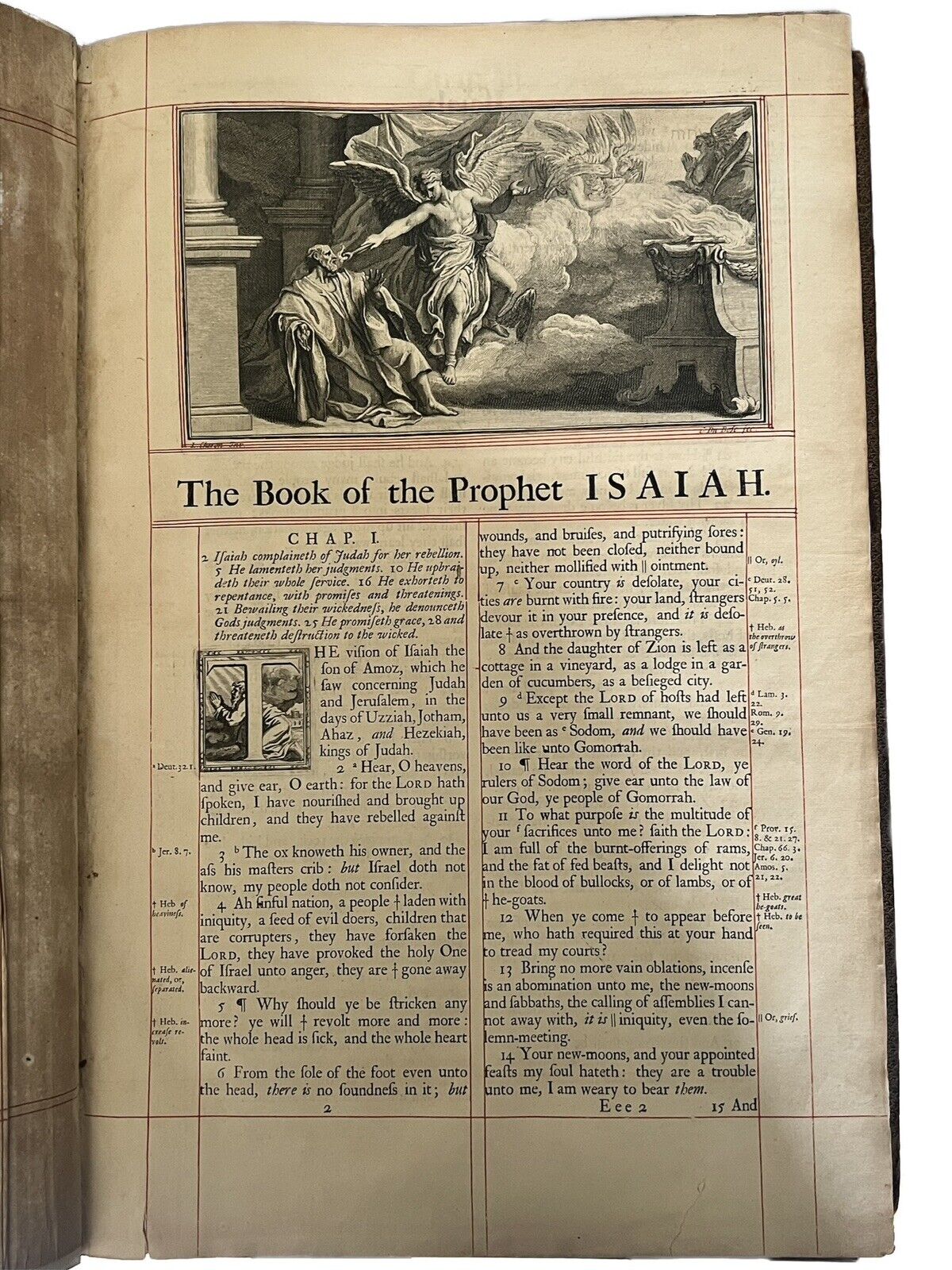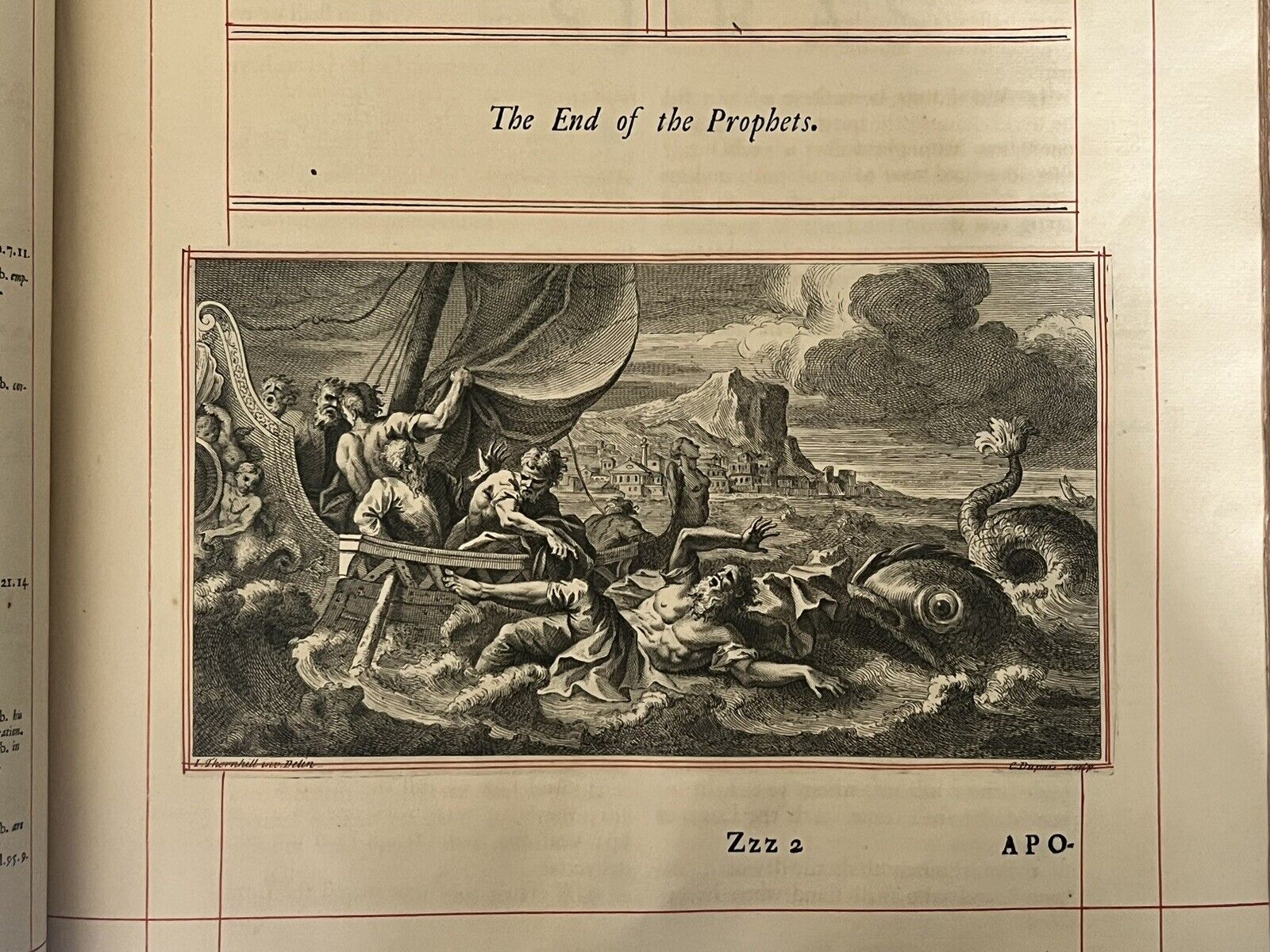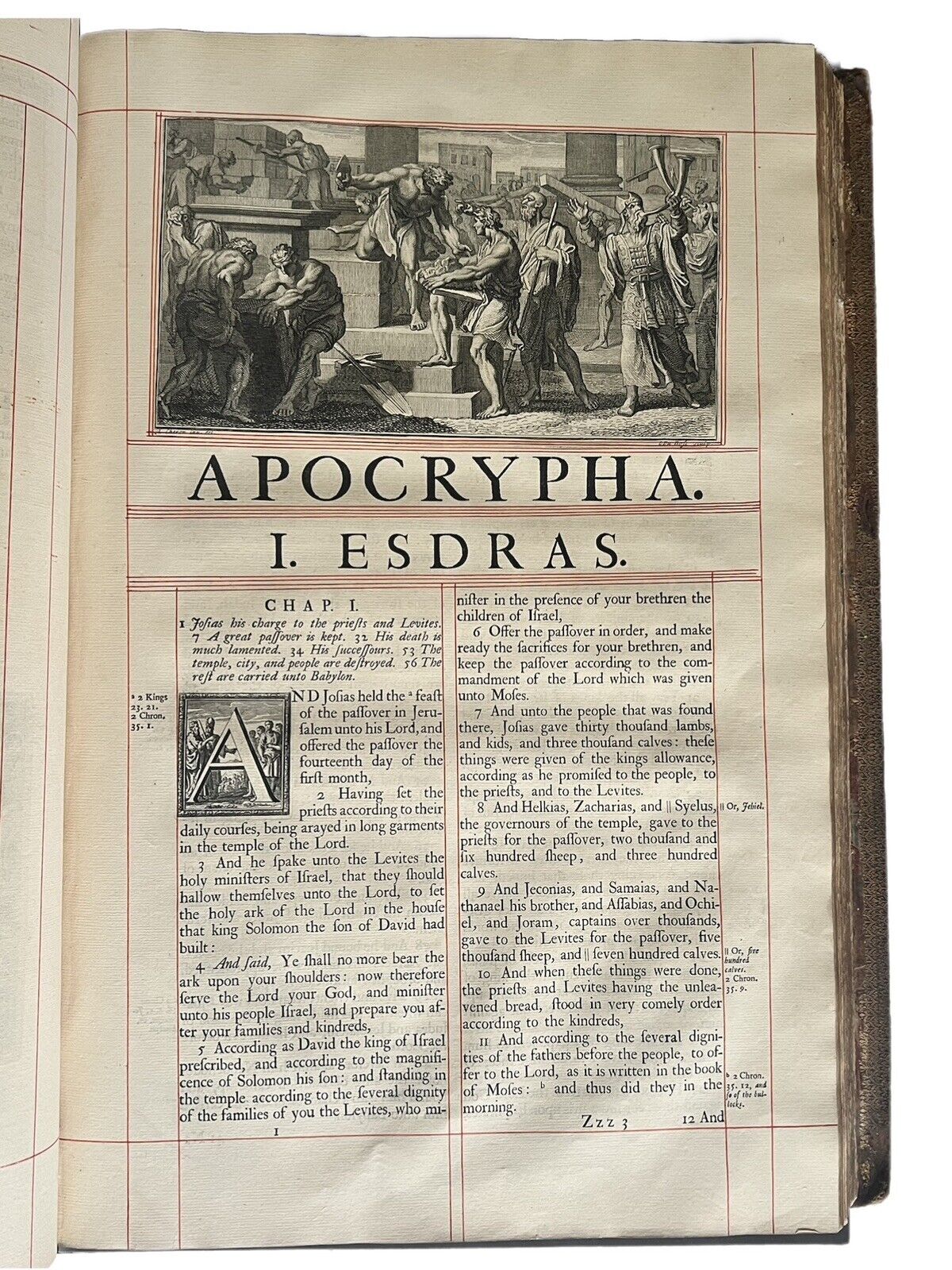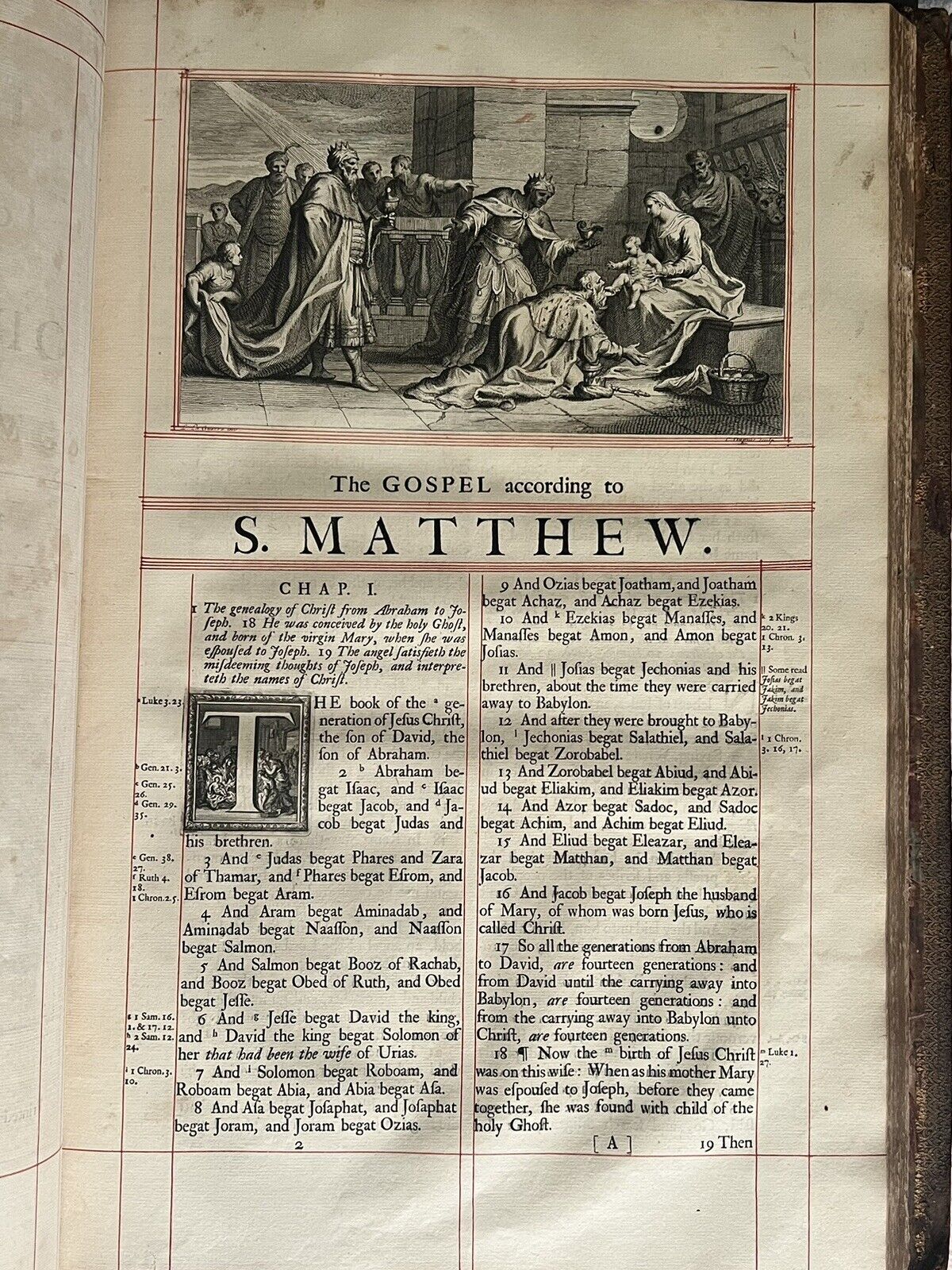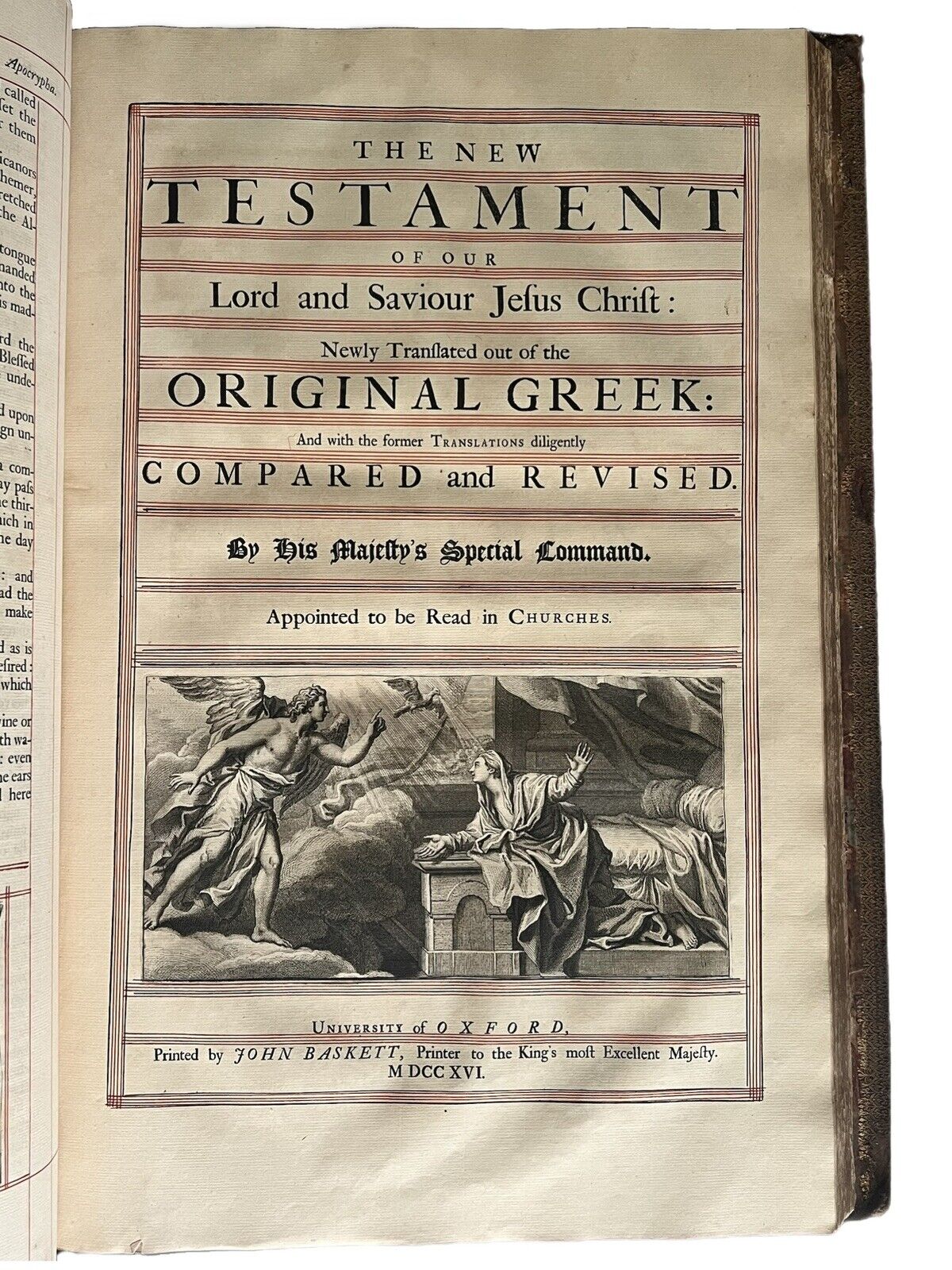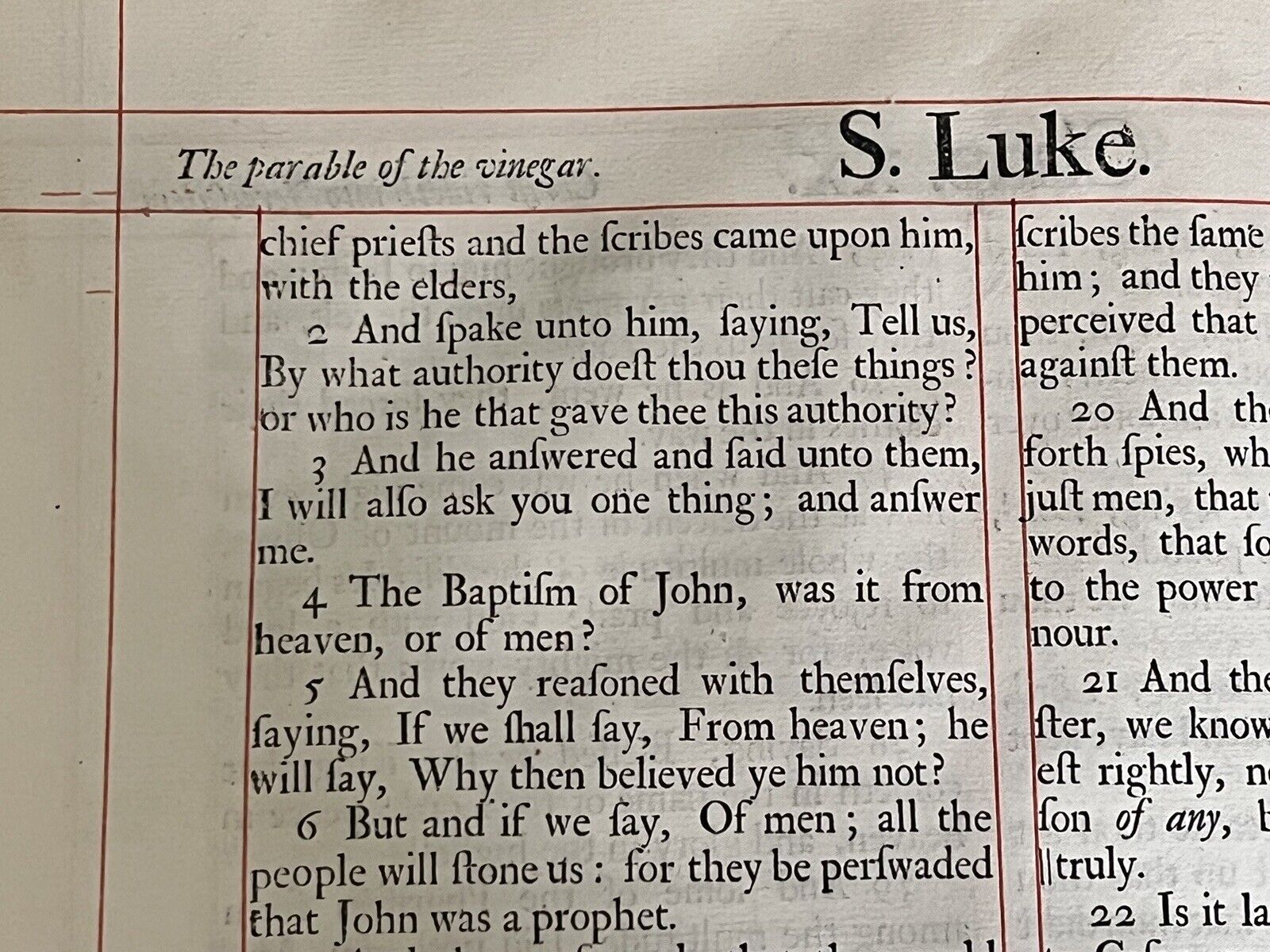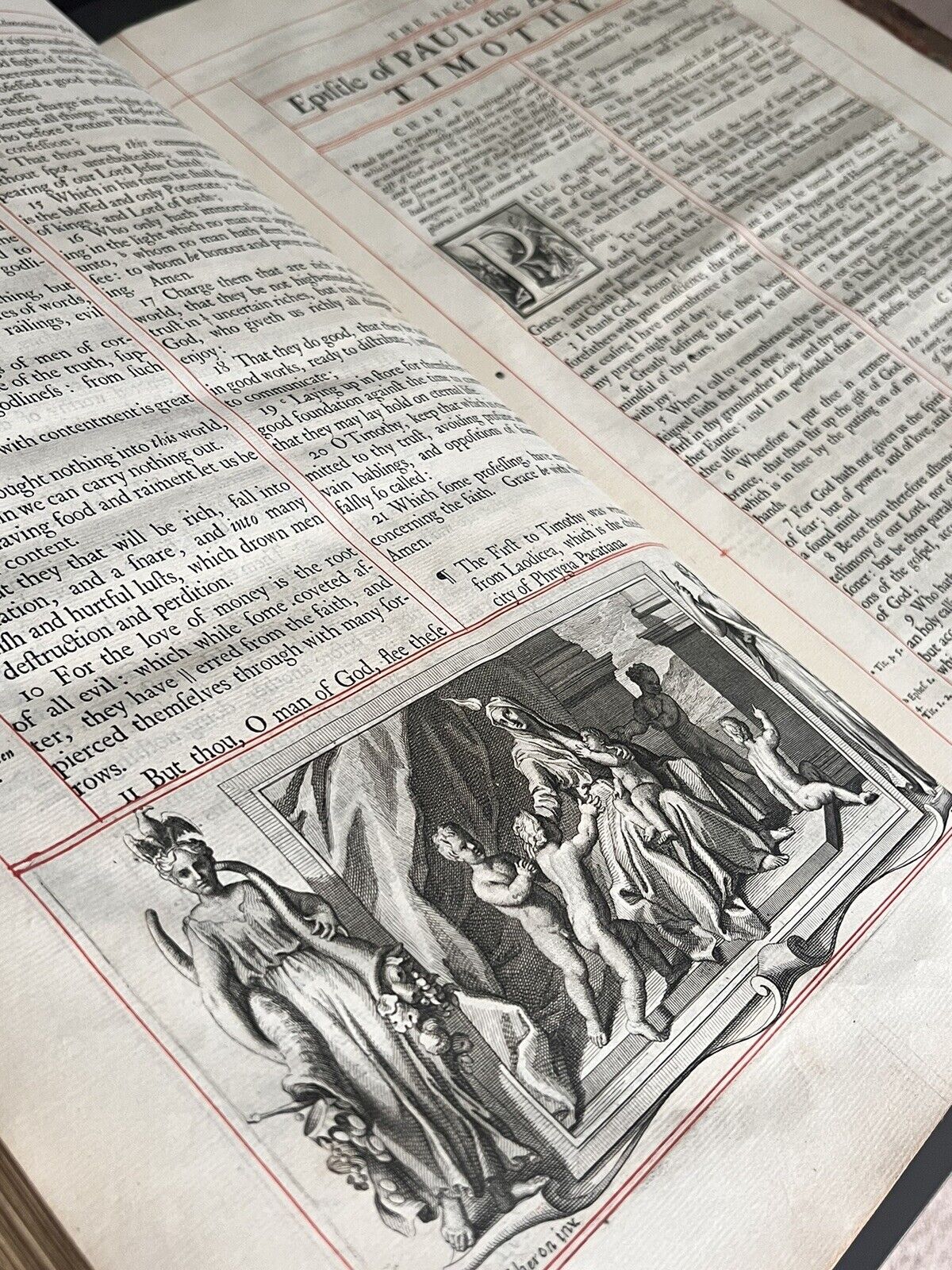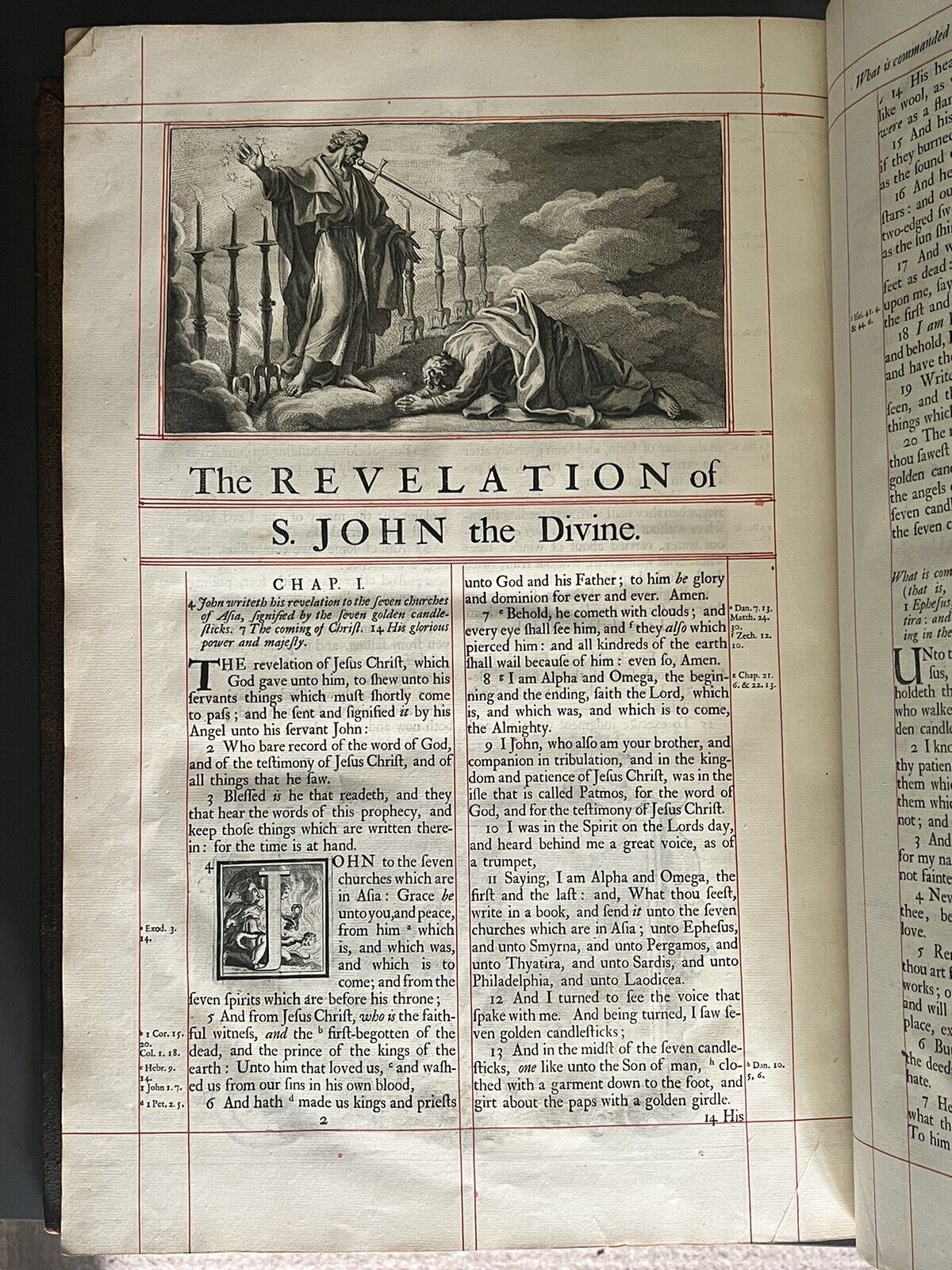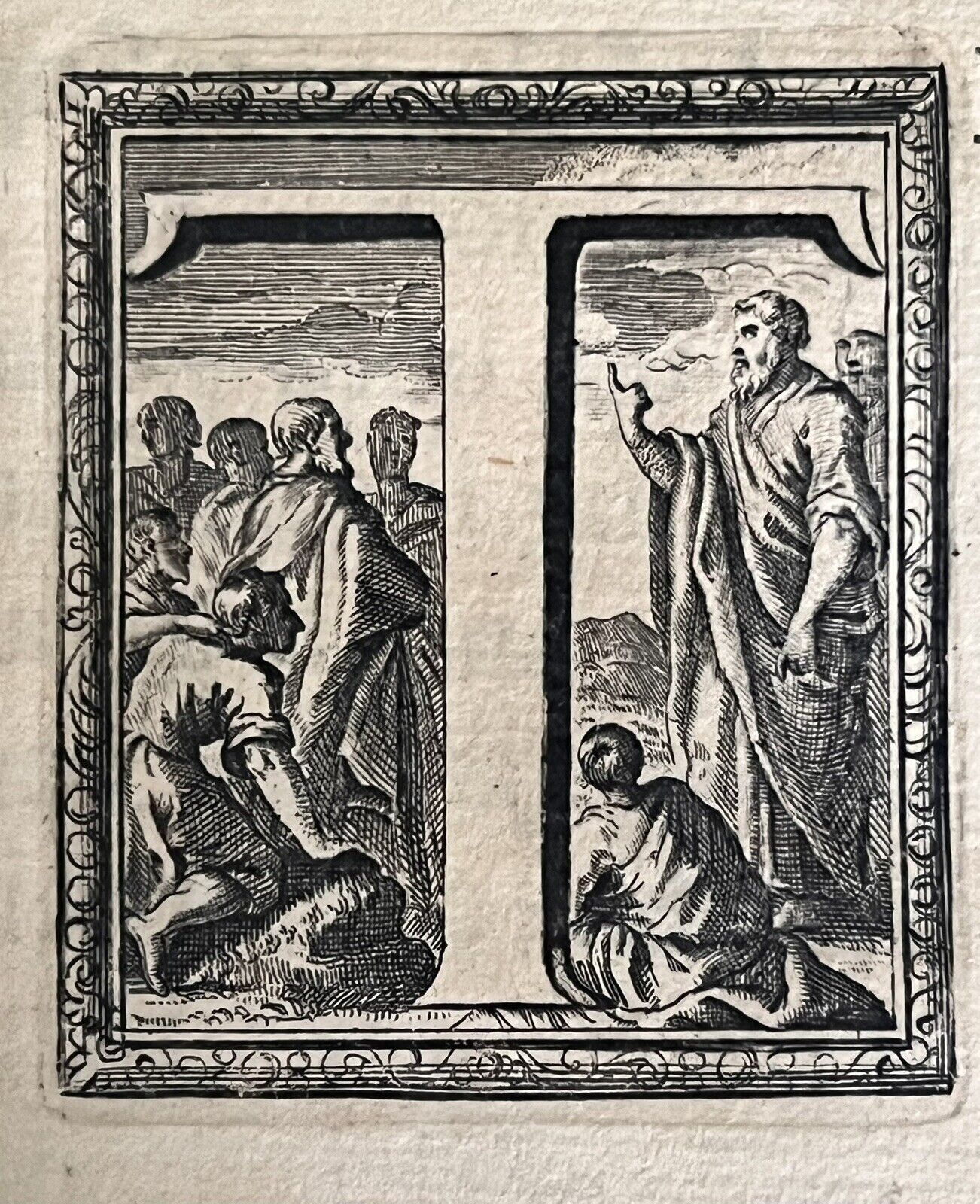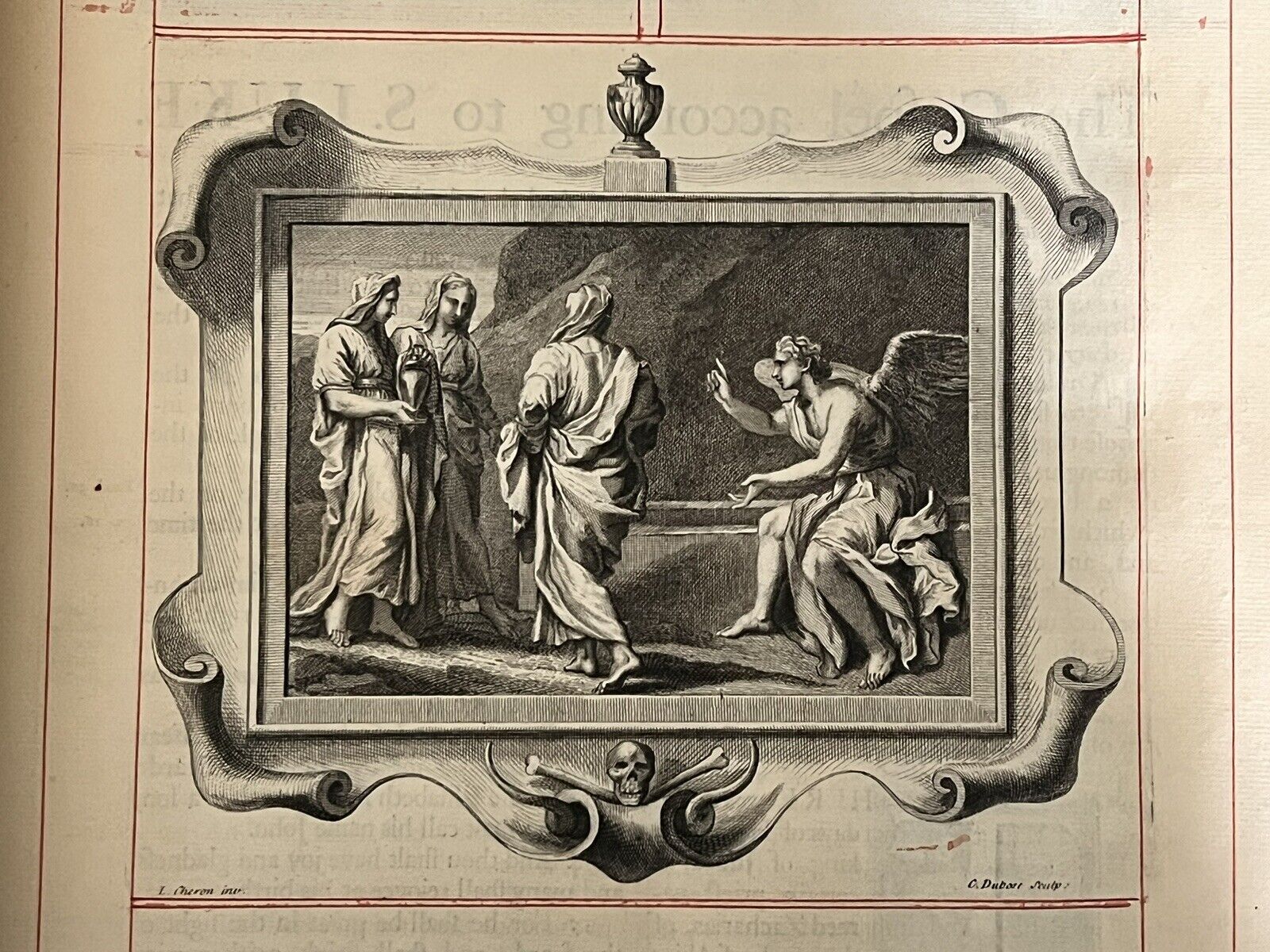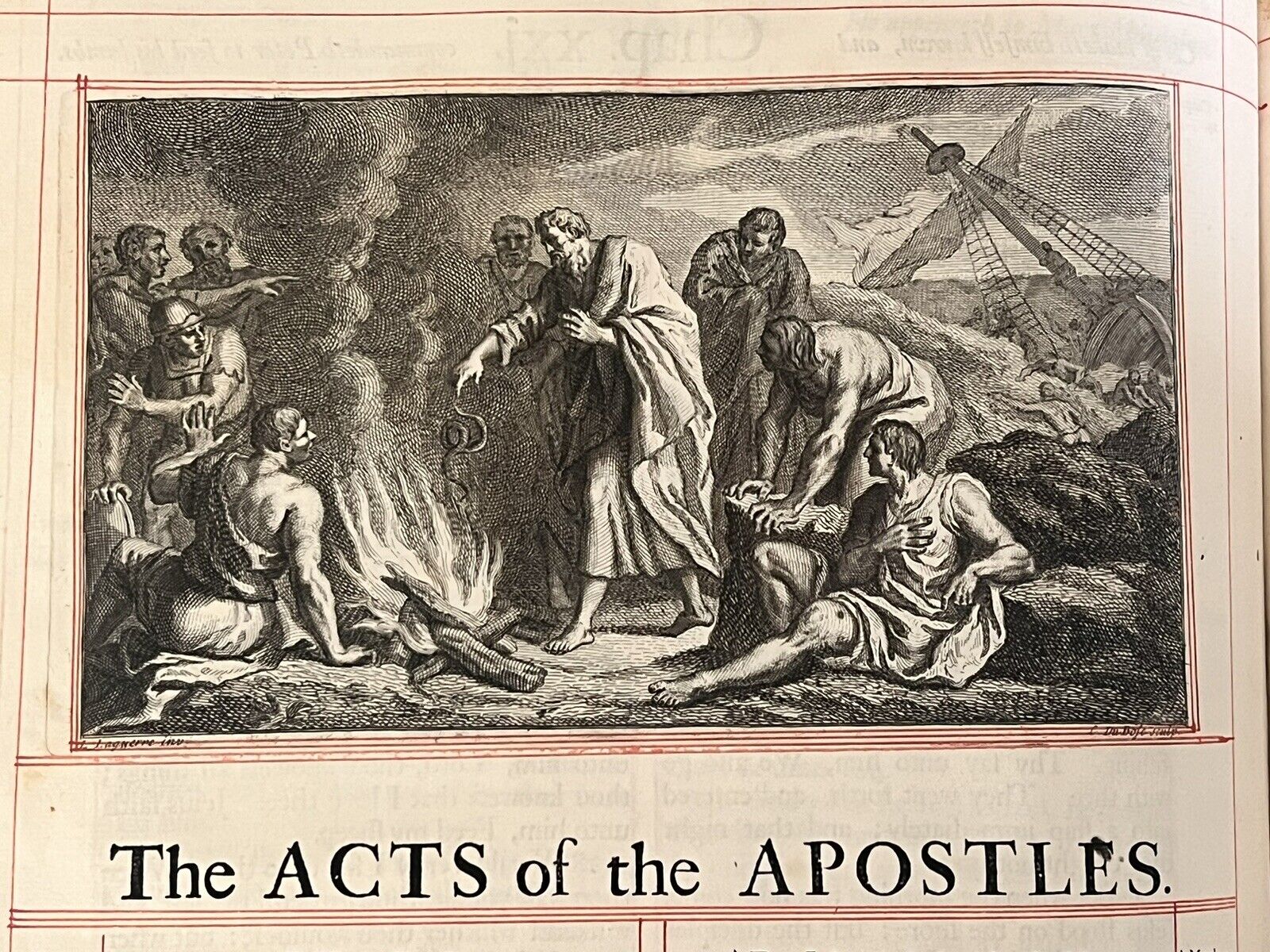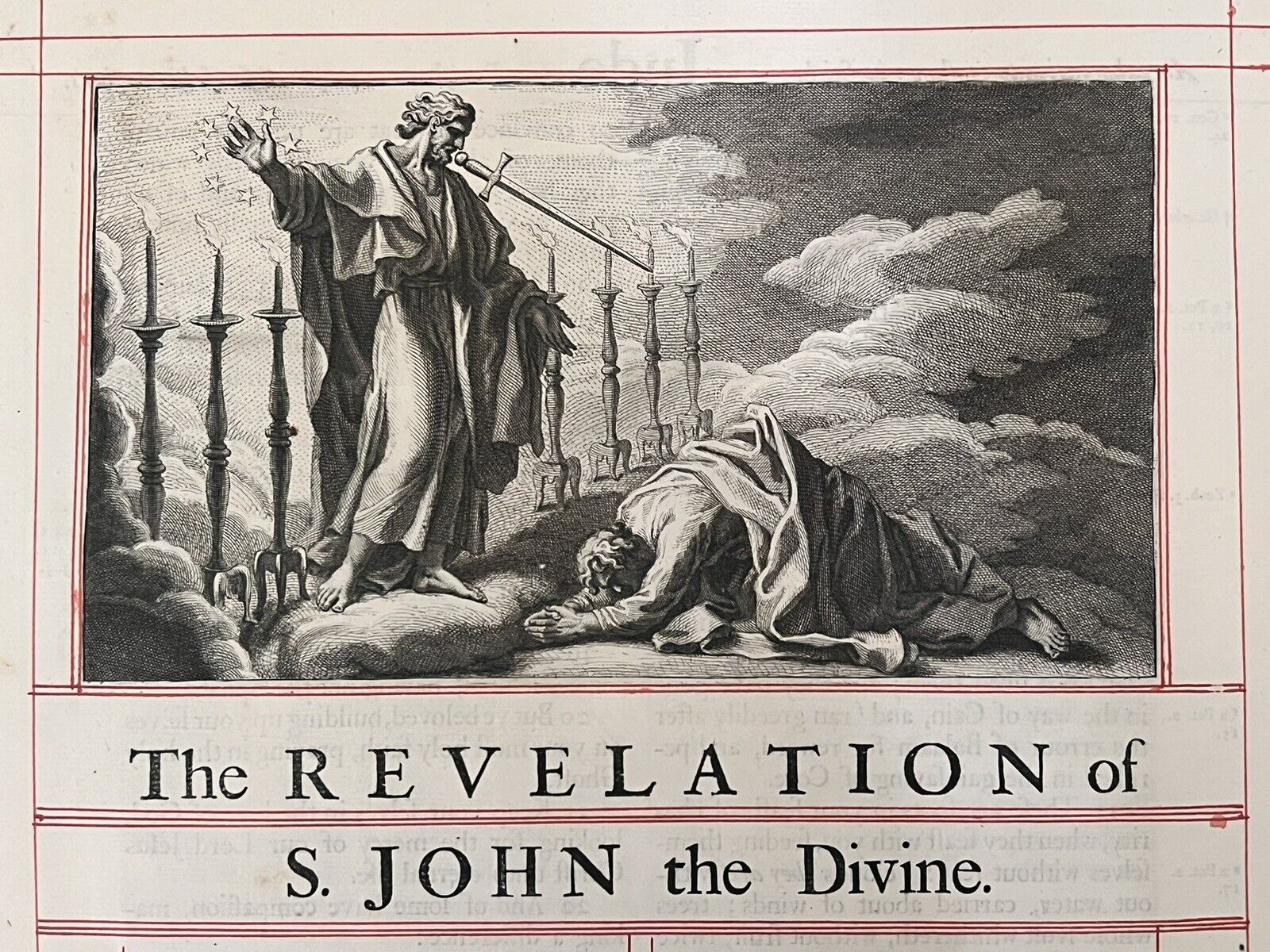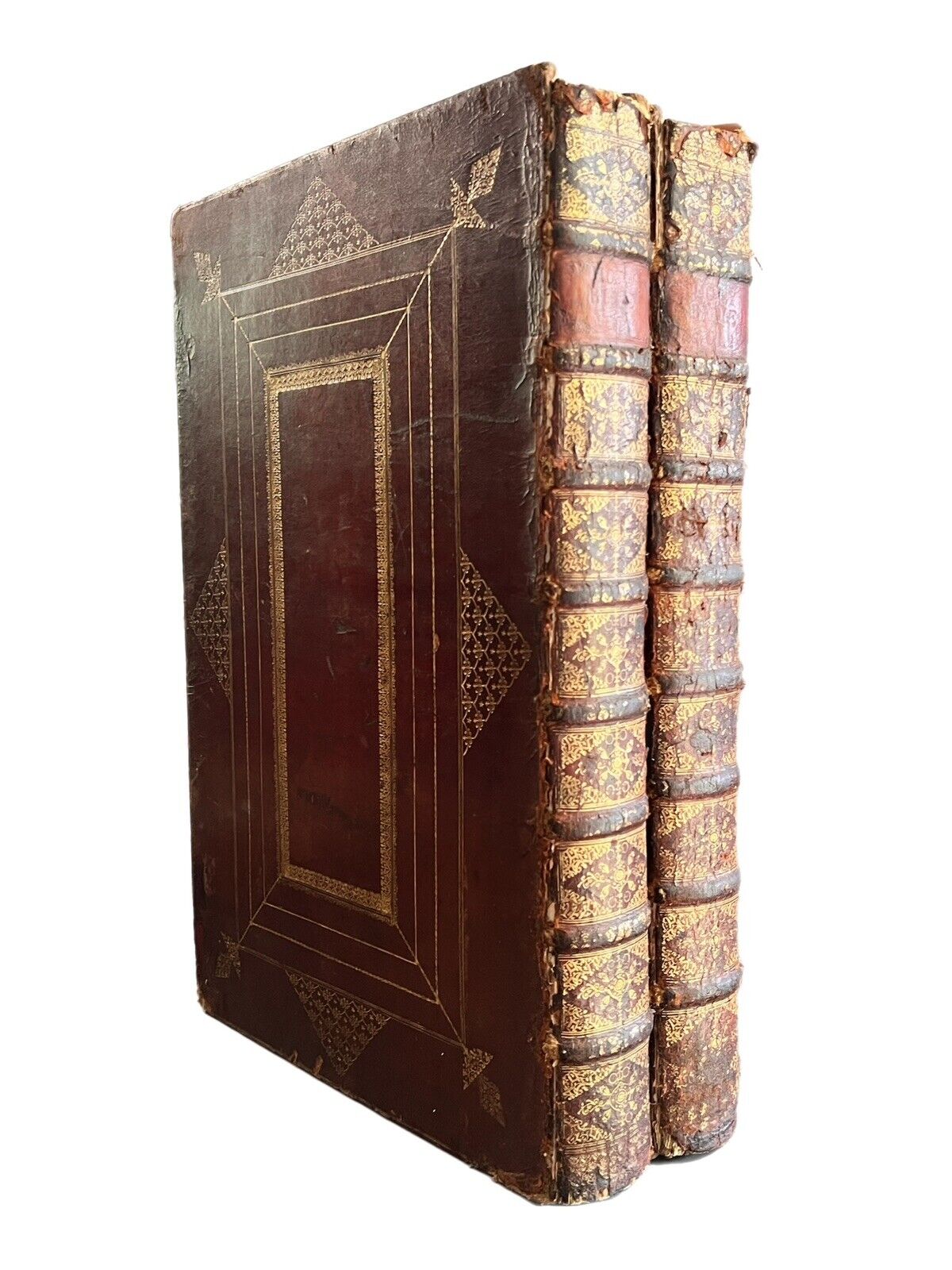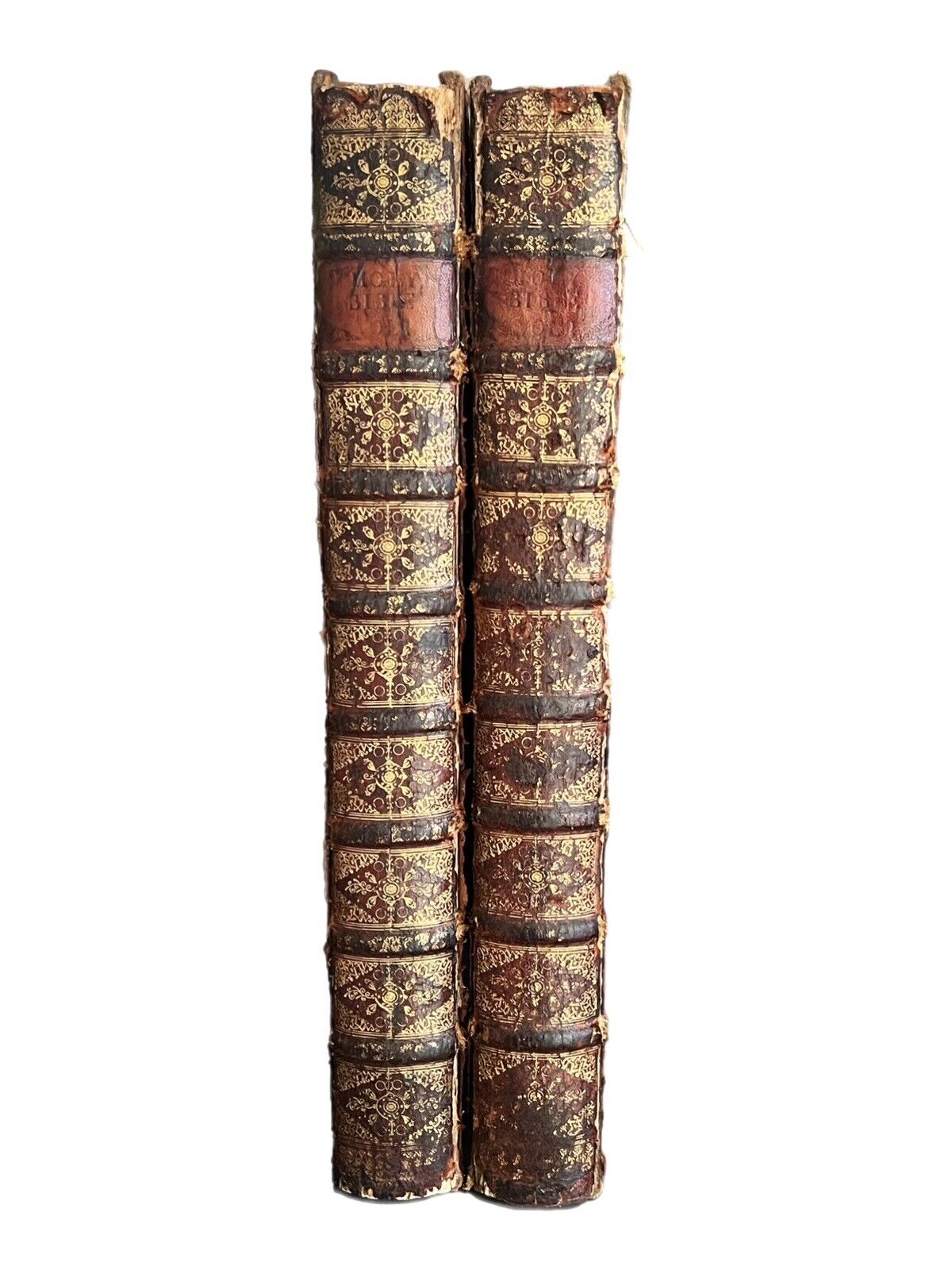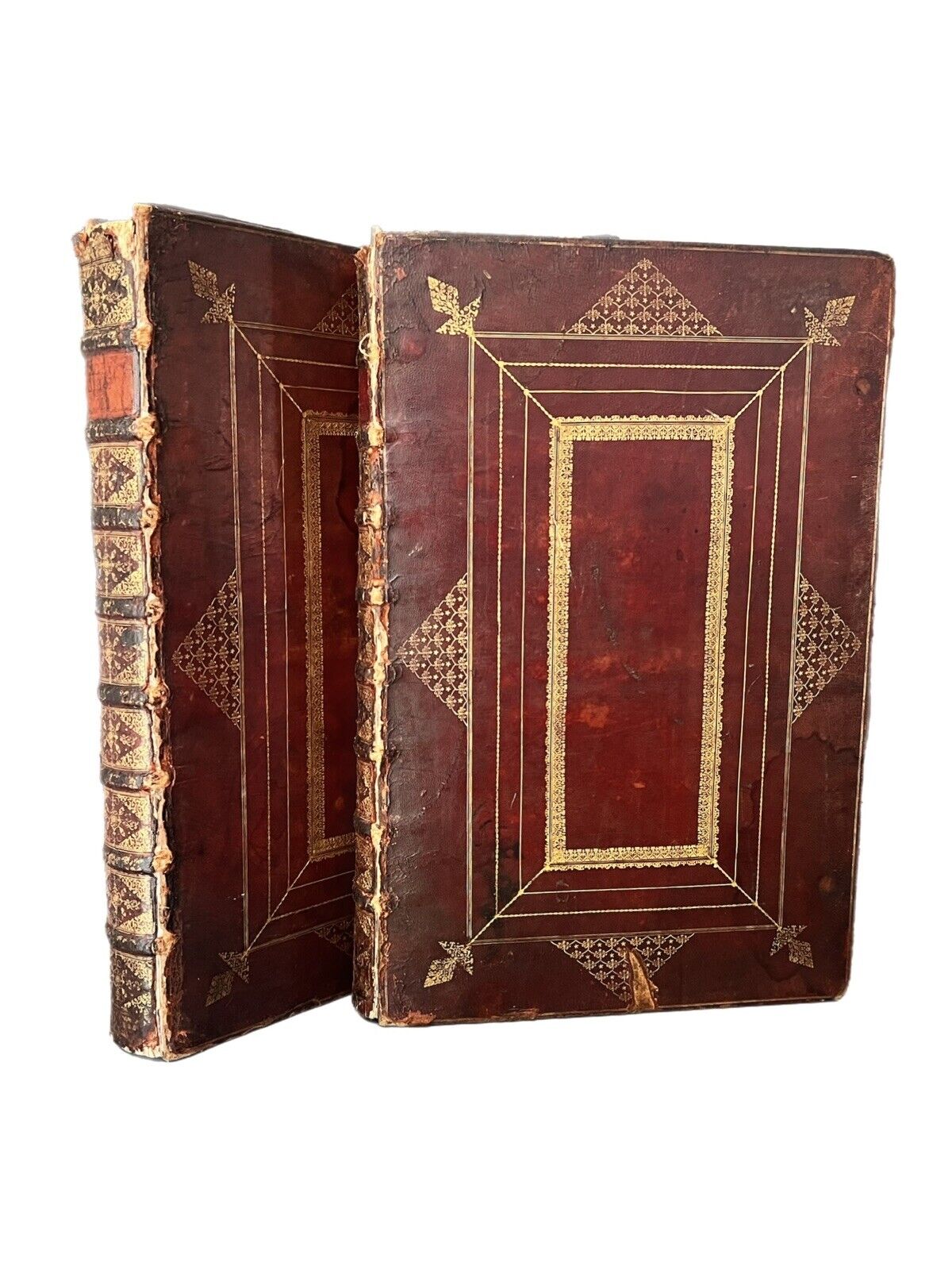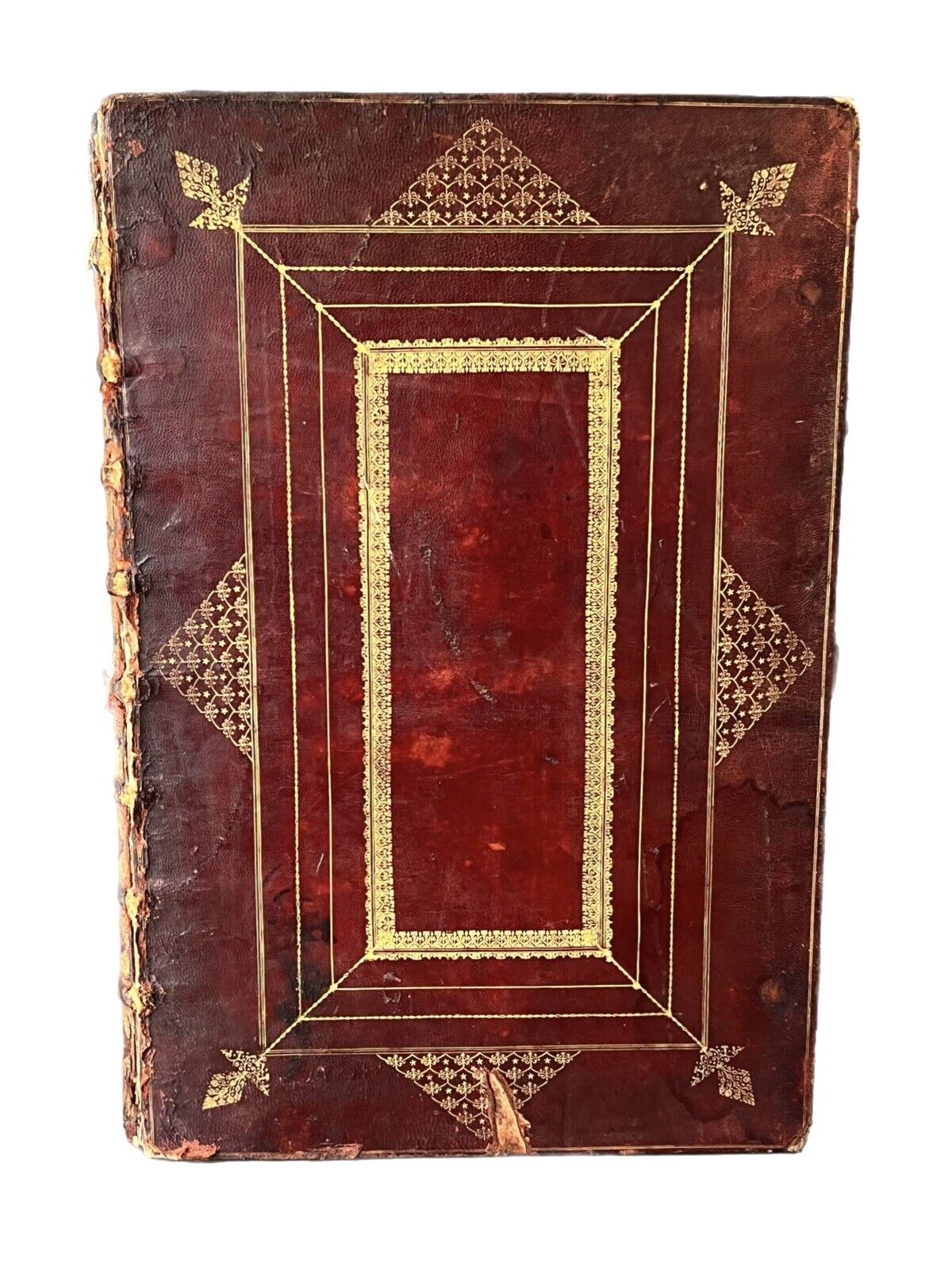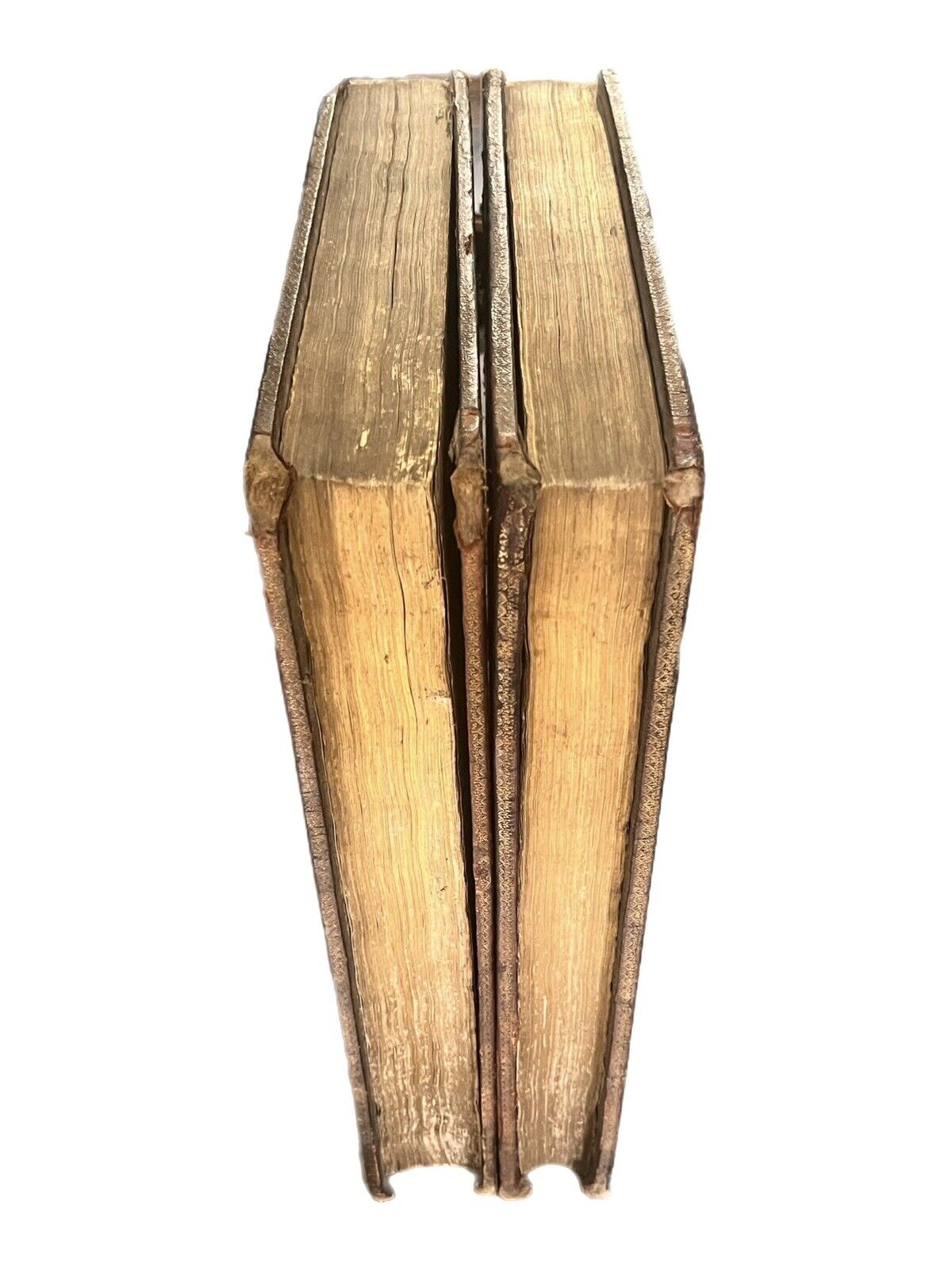The Vinegar Bible 1716-1717 Fine Bindings
The Vinegar Bible 1716-1717 Fine Bindings
Couldn't load pickup availability
AN INCREDIBLE UNRESTORED ORIGINAL COPY OF “THE MOST MAGNIFICENT BIBLE EVER PRODUCED IN ENGLAND” IN BEAUTIFUL CONTEMPORARY FINE BINDINGS WITH UNBROKEN PROVENANCE!
An absolutely magnificent example of John Baskett’s Vinegar Bible, fresh to the market having come from a private collection where it has been kept for the vast majority of its lifetime, since the 18th century. Published in 1716-1717, this Bible is so named because of Baskett’s infamous errors throughout (“a Baskett-full of errors”), including the headline ‘the parable of the vinegar’ instead of the parable of the vineyard in Luke XX giving its famous name. It is the origin of the term ‘basket case’, originally a Baskett case!
John Baskett wished to produce an incredibly high quality Bible for use of the aristocracy in a very large folio edition which could be used as a status symbol for the elite. Baskett's masterpiece is generally acknowledged as the most magnificent Bible ever printed in England. It is adorned with numerous beautiful engraved head and tailpieces depicting Biblical scenes by the master Louis Cheron (1655-1725). His prints for the Baskett Vinegar Bible were among his most important and beautiful works as an illustrator, and reproductions of these prints are incredibly difficult to find.
The entire Bible is red-ruled throughout and features the full suite of the famous engravings. The typography is nothing short of incredible, and the stunning fine bindings are very extravagant. This example is all the more special for being in contemporary fine bindings and coming from a private aristocratic collection where it has been housed for the vast majority of its lifetime. This has not seen the market in almost three centuries. Finding a copy of this which is in completely original condition, not having been rebacked or restored, is quite practically impossible. This is an incredible opportunity to acquire the most magnificent Bible ever produced in England, a truly original example from a notable aristocratic collection.
This is Darlow & Moule's variant A, the most desirable of the two variants with the additional engraved title page, here bound as a frontispiece, with Moses writing the first word of Genesis. This is lacking in almost all copies, and remains exceedingly desirable to find a copy complete with this.
-------------------
Provenance:
Originally purchased by Lord & Lady Raymond with the binding commissioned by them, with Lady Raymond's ownership inscription to the front free endpaper in the second volume reading "Lady Raymond, her book 1750."
Then acquired by Lord & Lady Sandys of Ombersley Court circa 1756, and kept by descent in the aristocratic Sandys family estate until 2024, where acquired by us.
When Dr Samuel Johnson visited the Sandys estate on the 13th of September 1774, he remarked "the house is very large, the hall is a very noble room." Many important figures throughout history visited the house (and library), and this Bible was the Bible to show off to guests, certainly retaining this function! It really is an incredibly special thing with about as great a provenance as one could possibly hope for, unbroken from the time of purchase.
-------------------
Size: 370 x 550 mm (approx., each)
*note the huge dimensions, these really are impressively large!
Condition:
[(3), frontis, t.p., (*), a1-c1, [*1-*2], A1-3E1, (3)]; [(3), t.p., 3E2-4Q3, t.p., A1-Y4, (3)]
Collates as complete including all title pages and original blanks. Contemporary full red morocco finely tooled in gilt to both spines and all boards in a panelled manner. Bindings rubbed with some losses, tooled labels lacking, joints cracked. All boards are attached, some a little fragile. Some minor staining to front board of the first volume. The bindings are without restoration and are original. Shelf and edge wear as typical. All page edges gilt (contemporary) with some wear. Very attractive on the shelf. No sagging of page blocks despite the immense size. Internally the text blocks are exceptionally clean throughout, contemporary red-ruled throughout every page, complete with the full suite of Cheron’s beautiful engravings. Ownership inscription dated 1750 to head of ffep verso in both vols, without any attached bookplates.
[D&M 735; Herbert 942; ESTC T89281].
